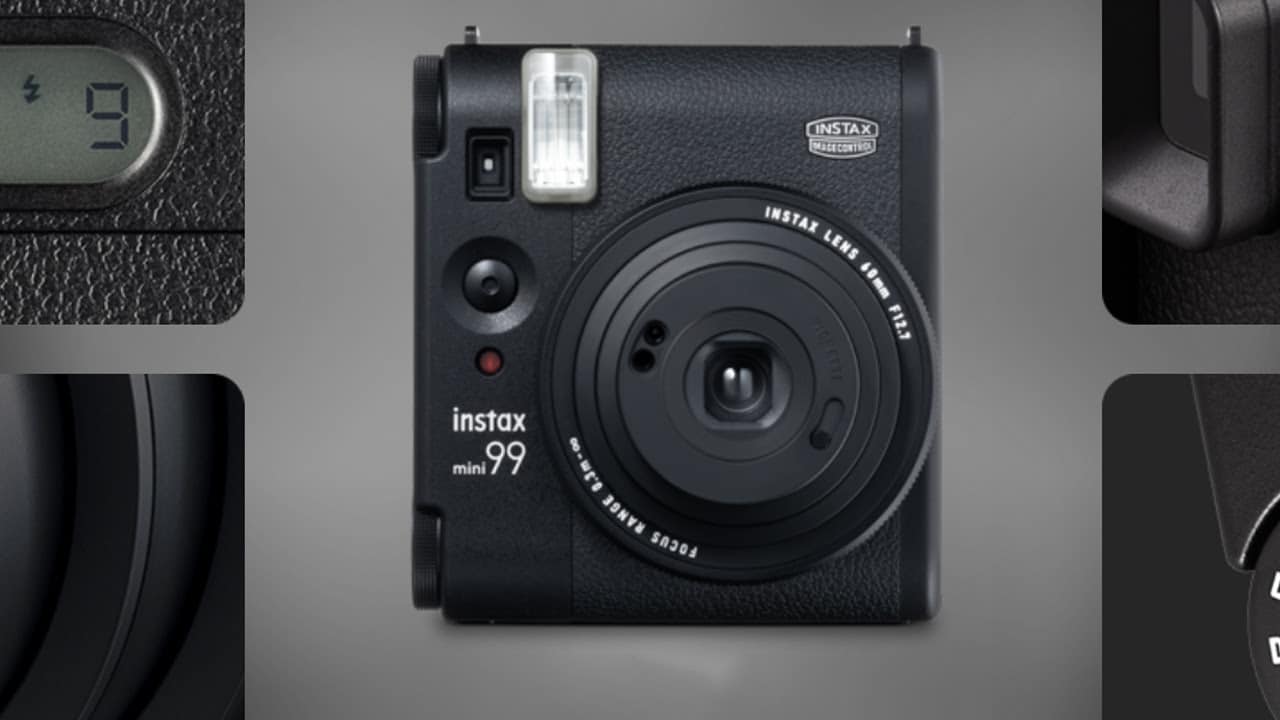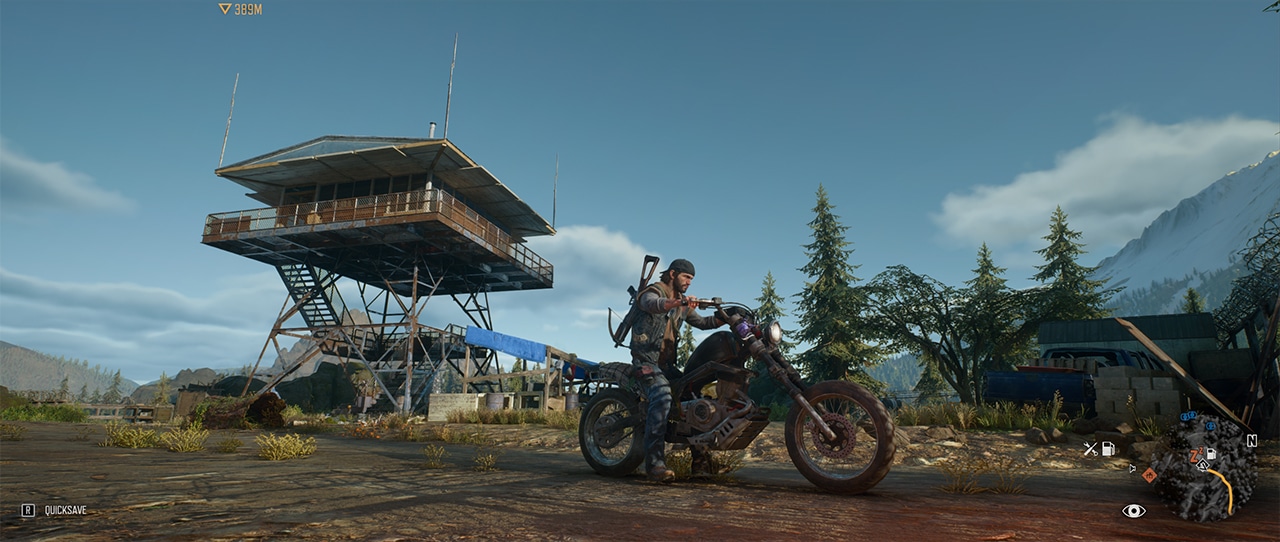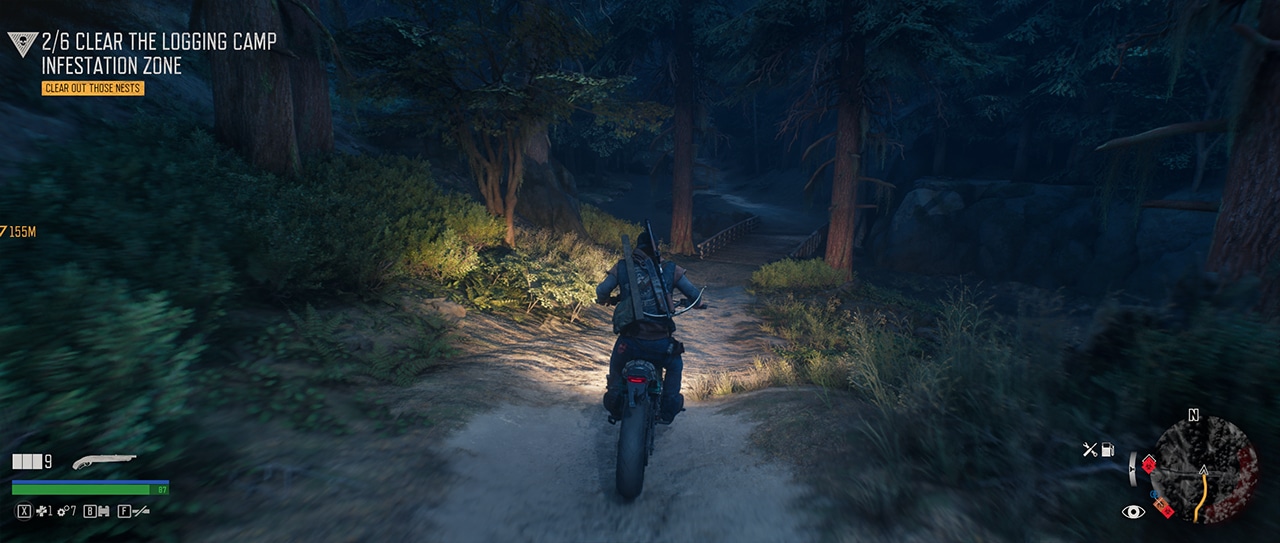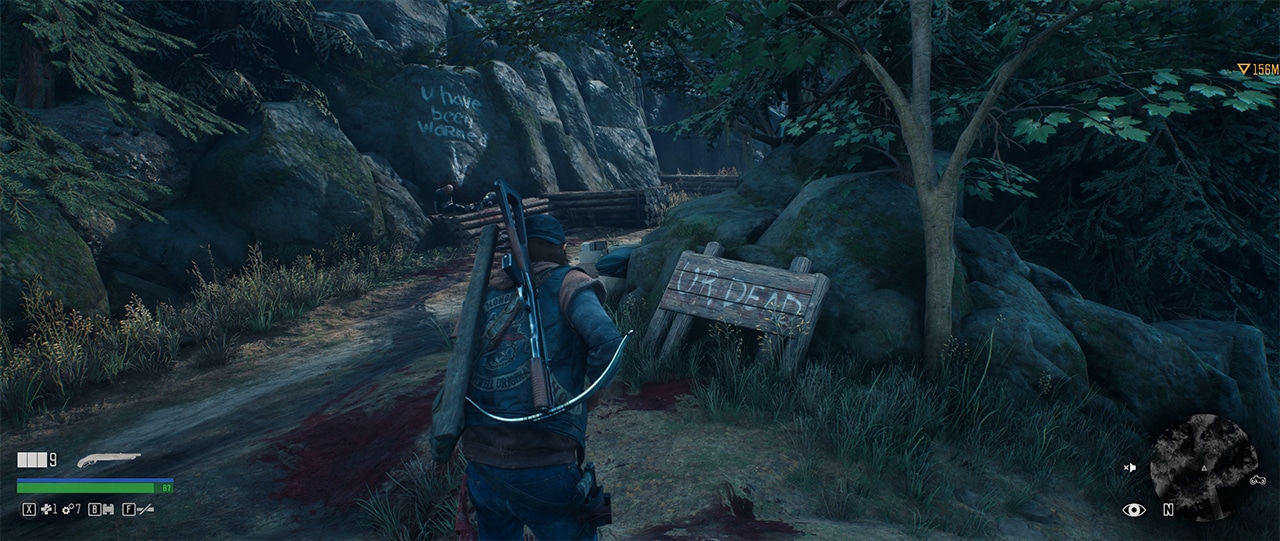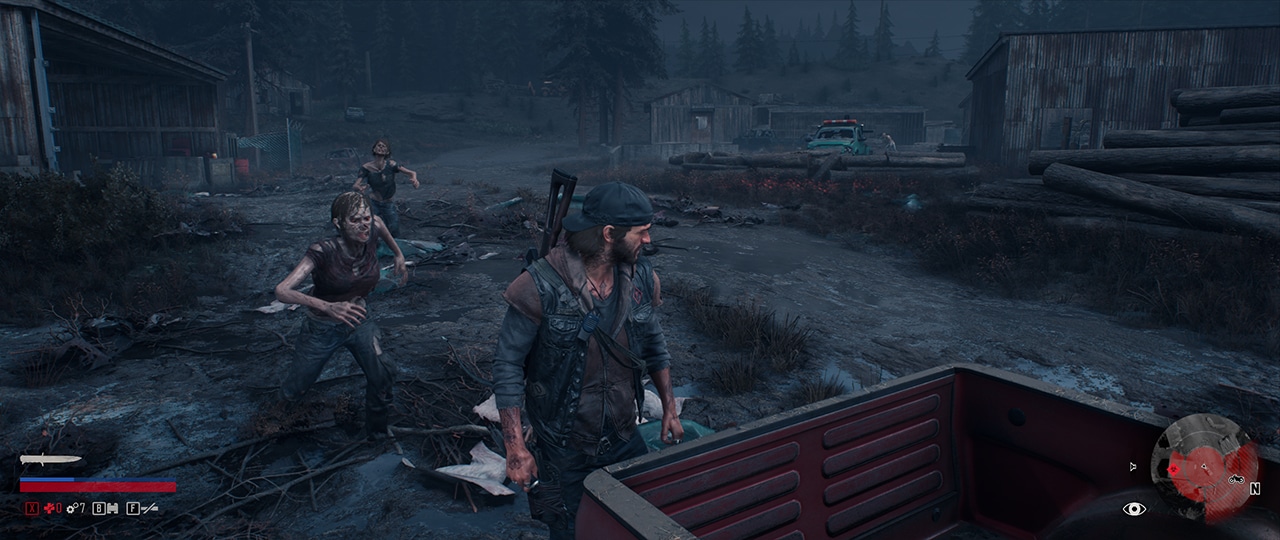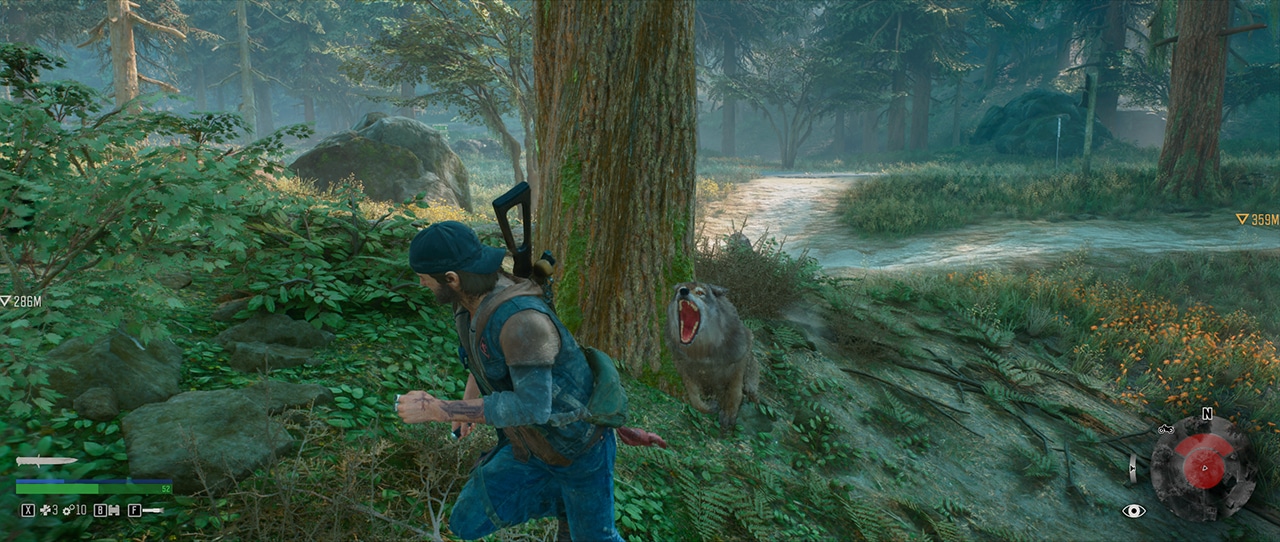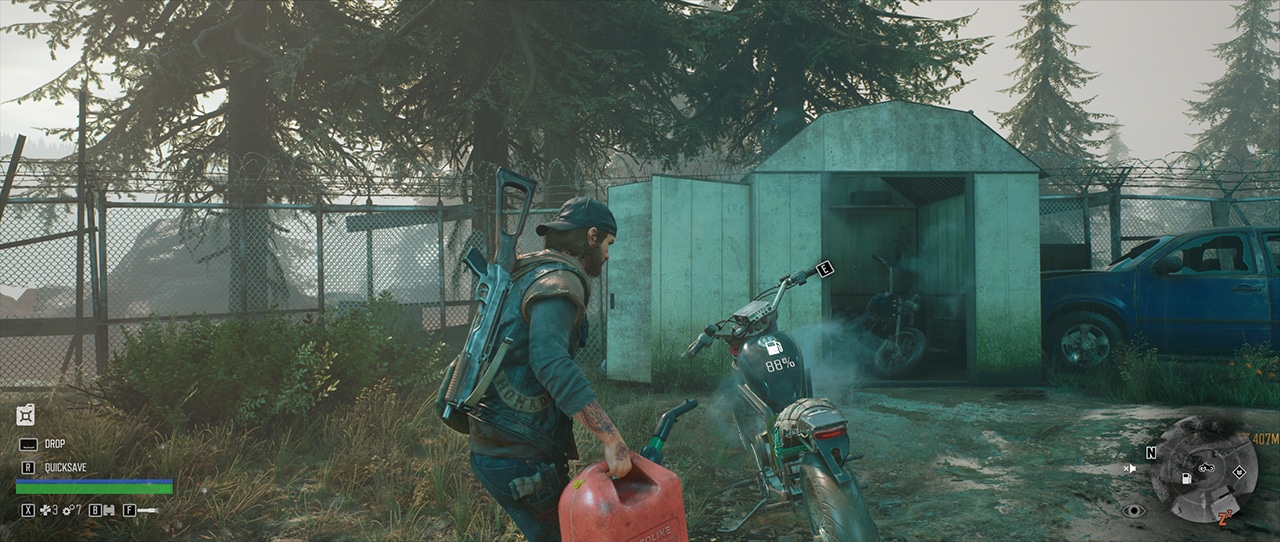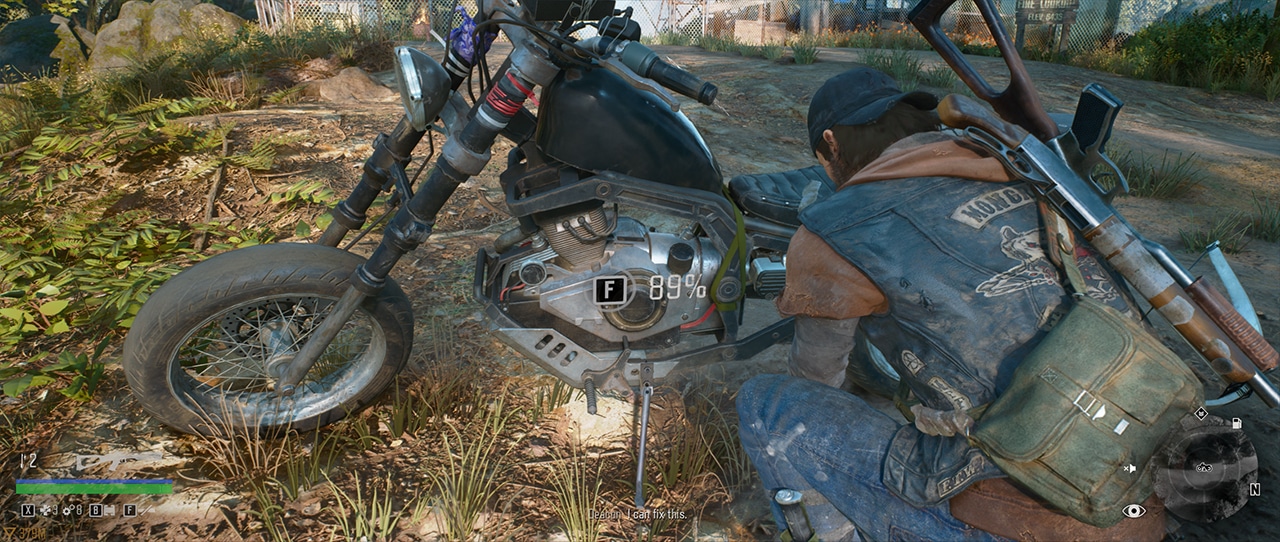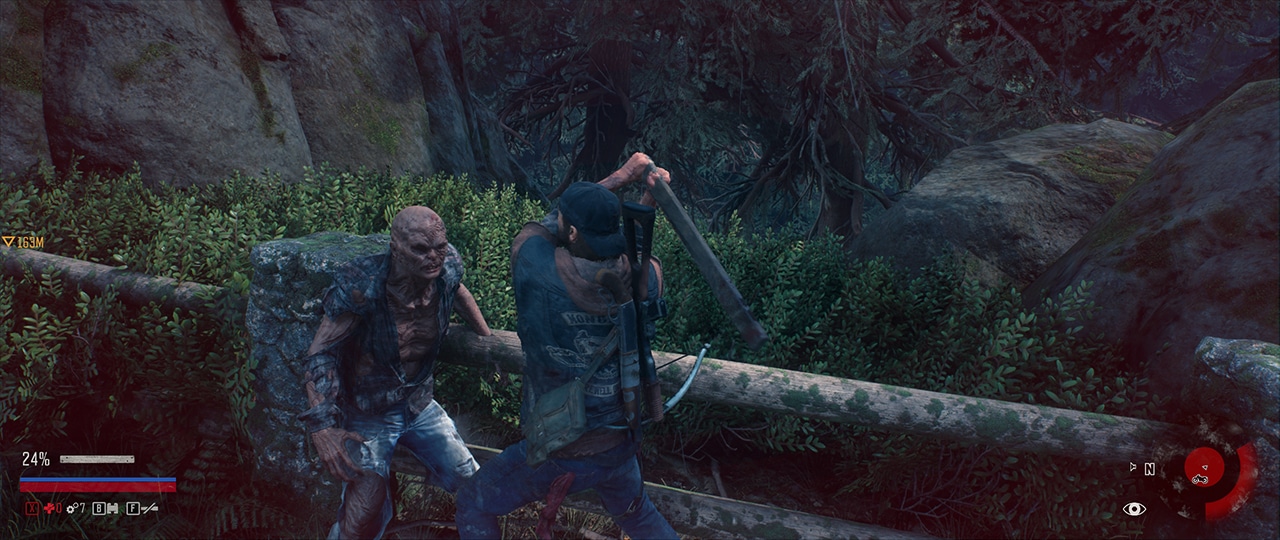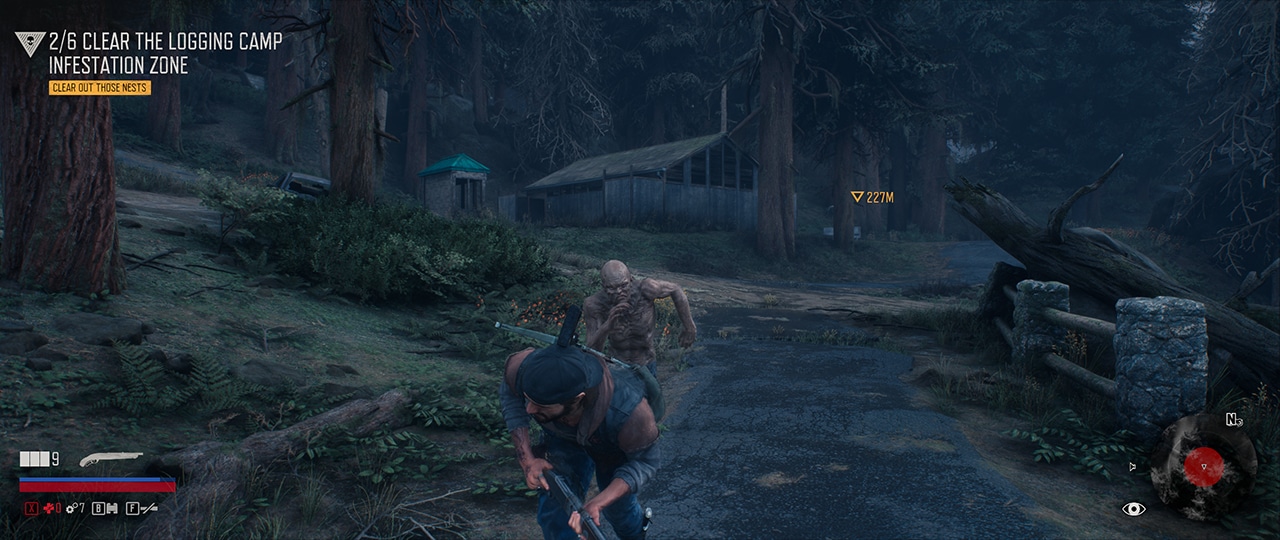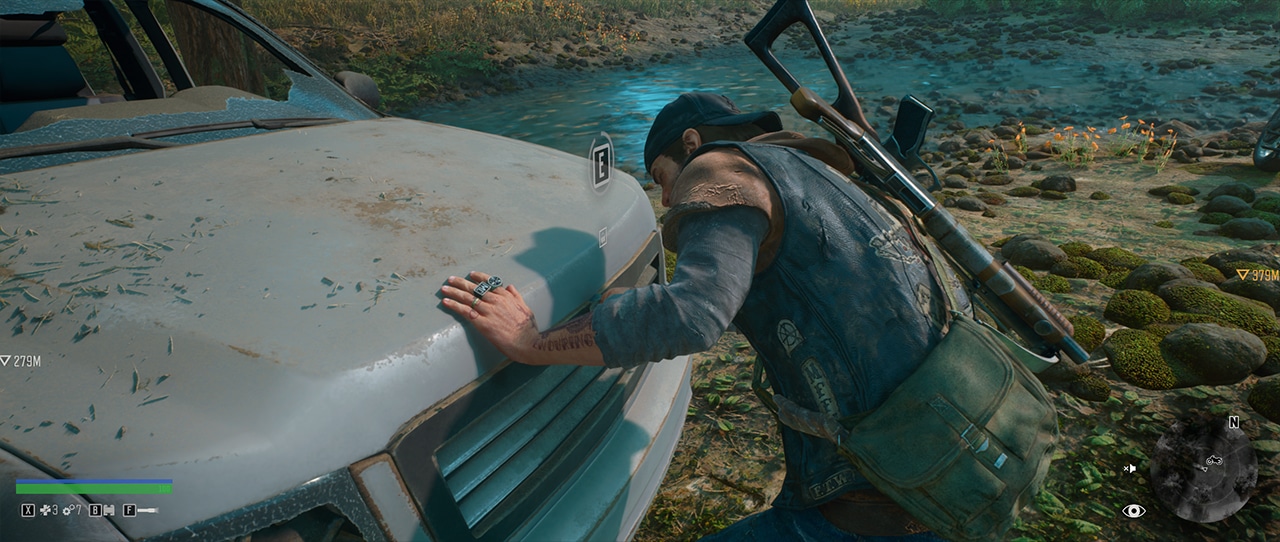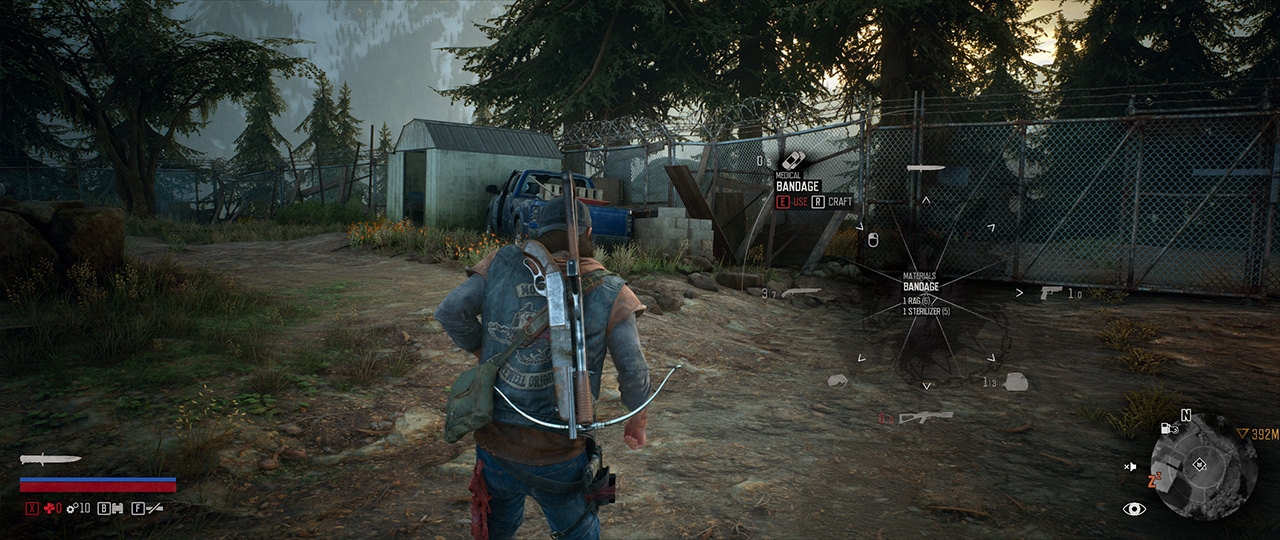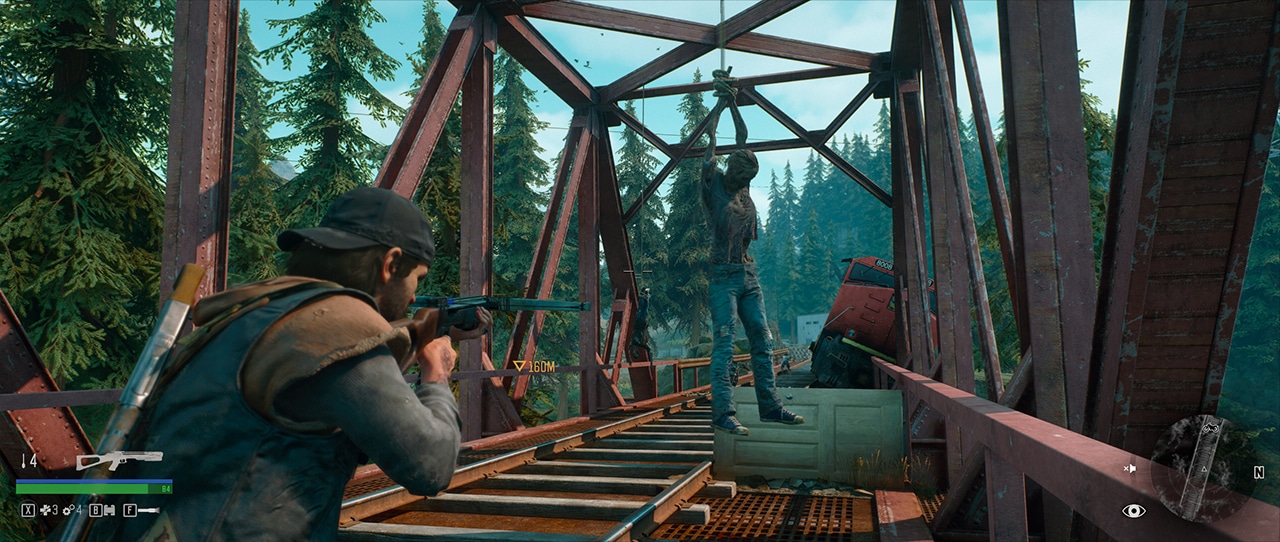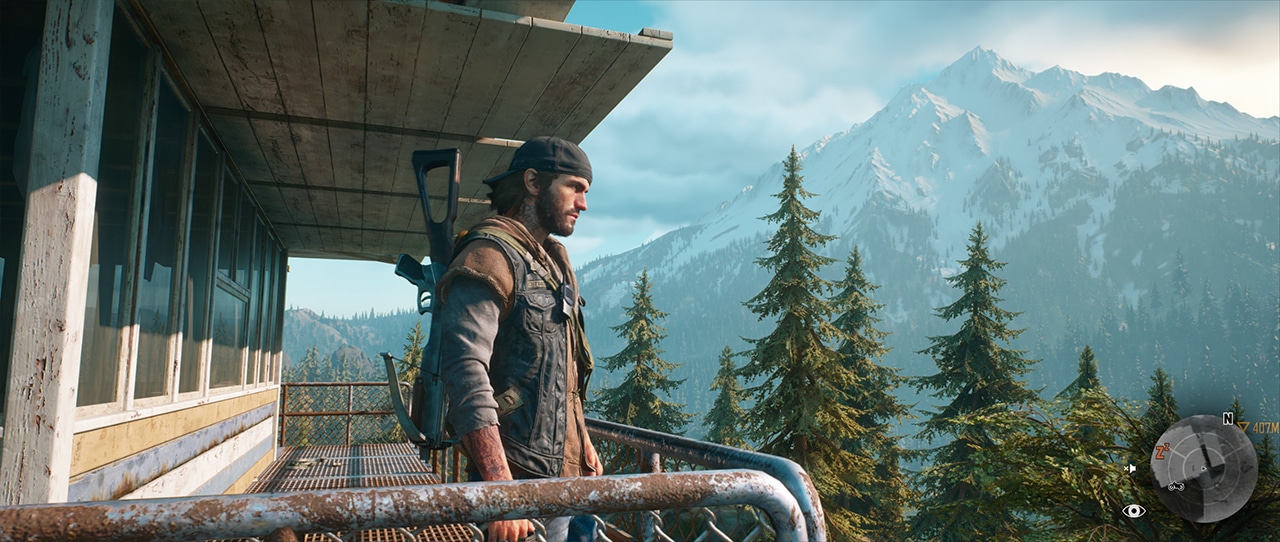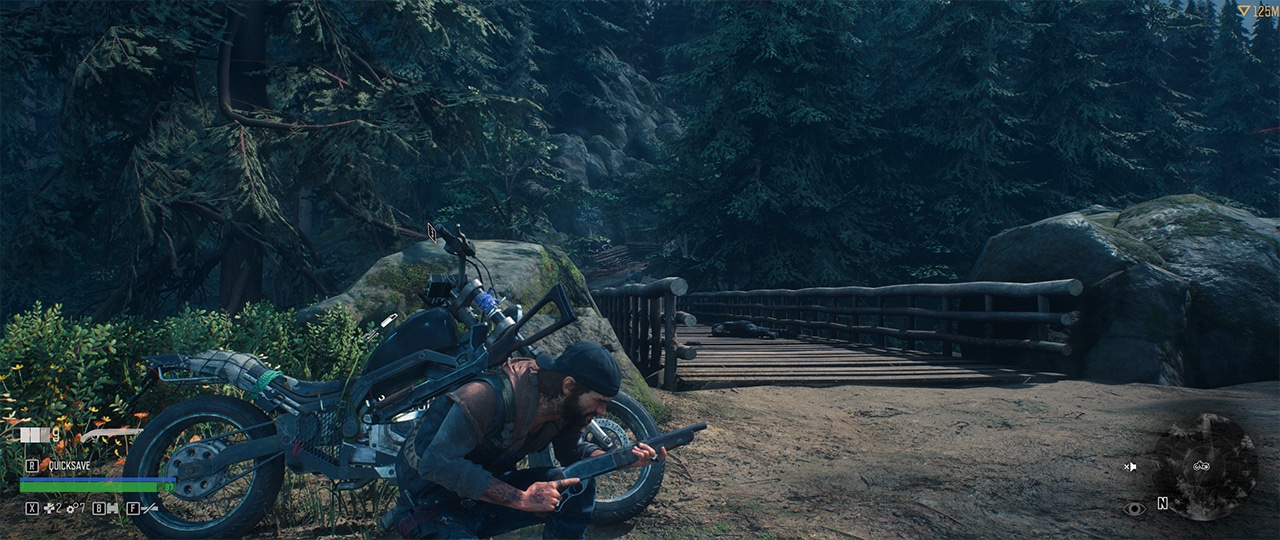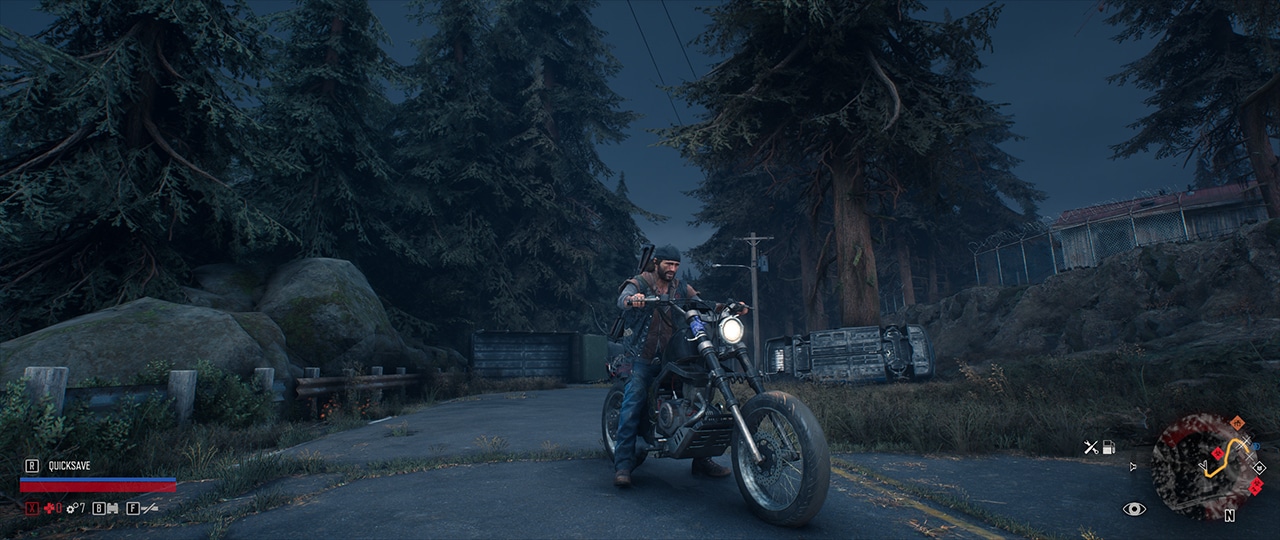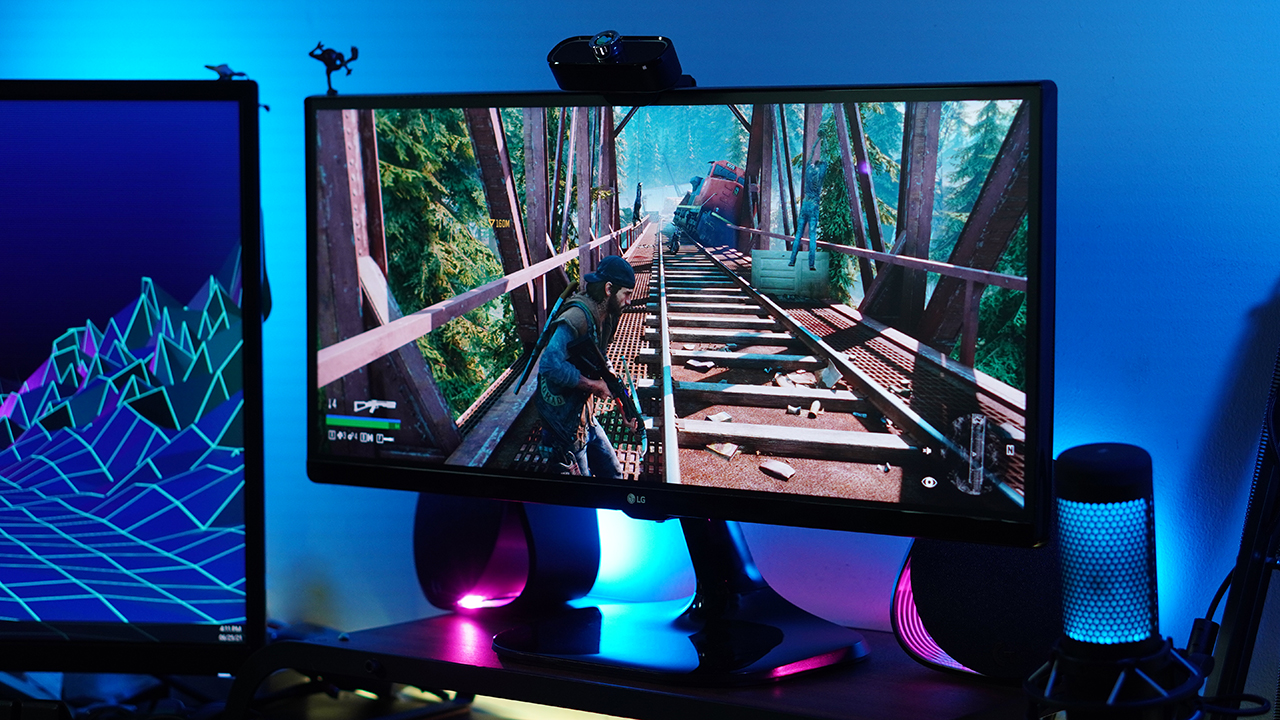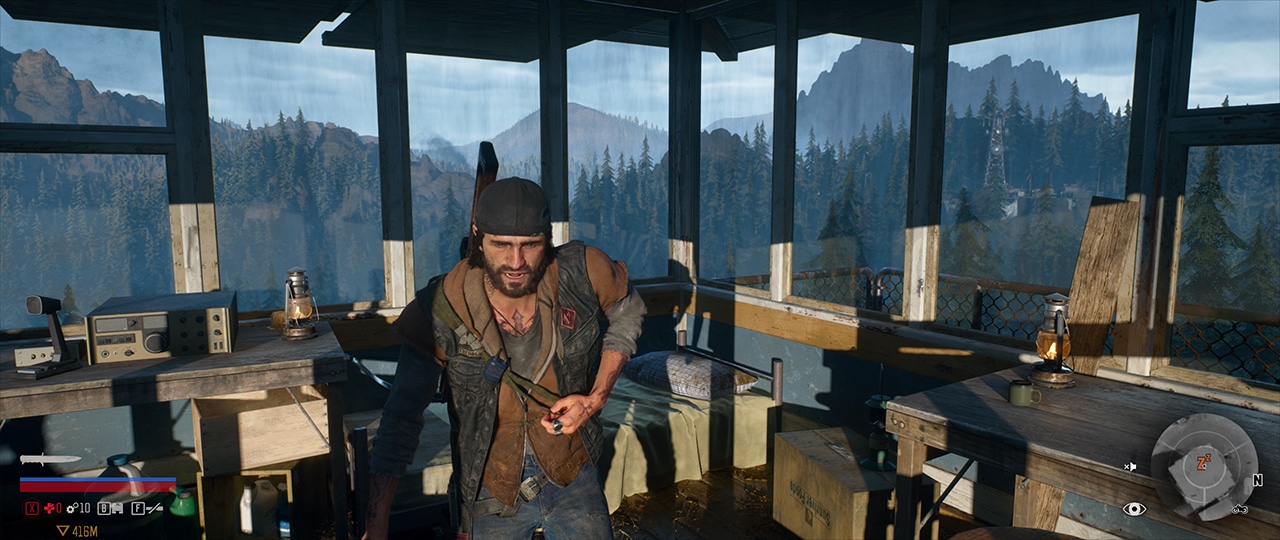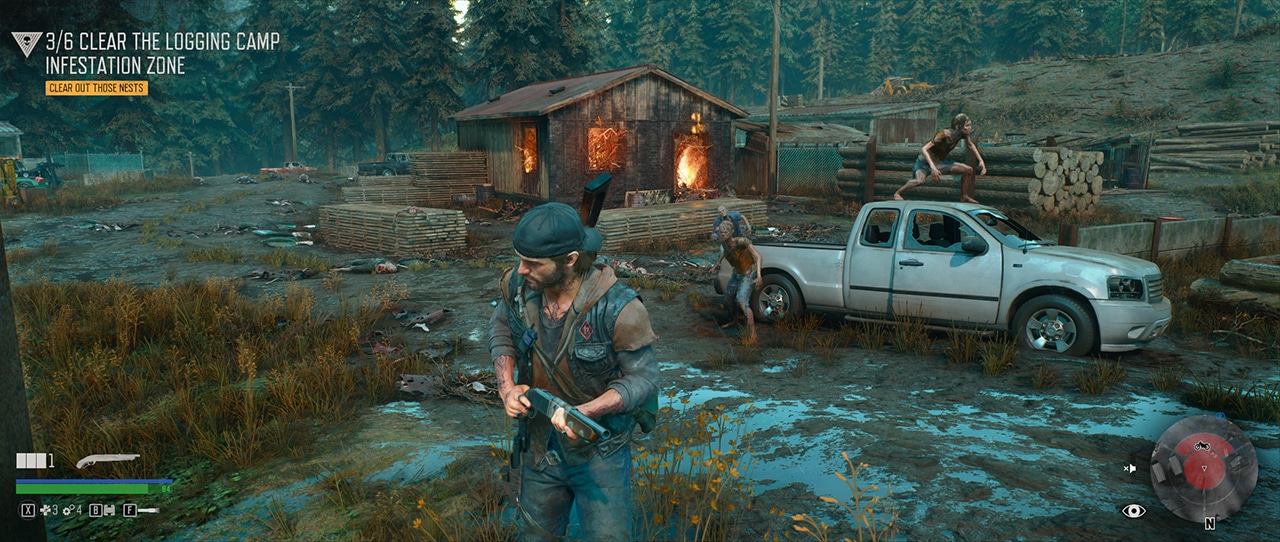You’ve probably seen our unboxing video as well as our first impressions of the new ASUS ZenBook 14X OLED Space Edition and the very reason for its existence.
But how does the laptop perform as a daily device and what else can it offer apart from its impressively designed exterior?
I’ve spent a good time with it and here are my thoughts.
Design
We’ve covered a lot in our first impressions with regards to its design and build quality. But just quickly, this special edition laptop comes in an aluminum body in Zero-G Titanium color and all over its shell are markings, patterns, and accents that all contribute to its space-themed approach.
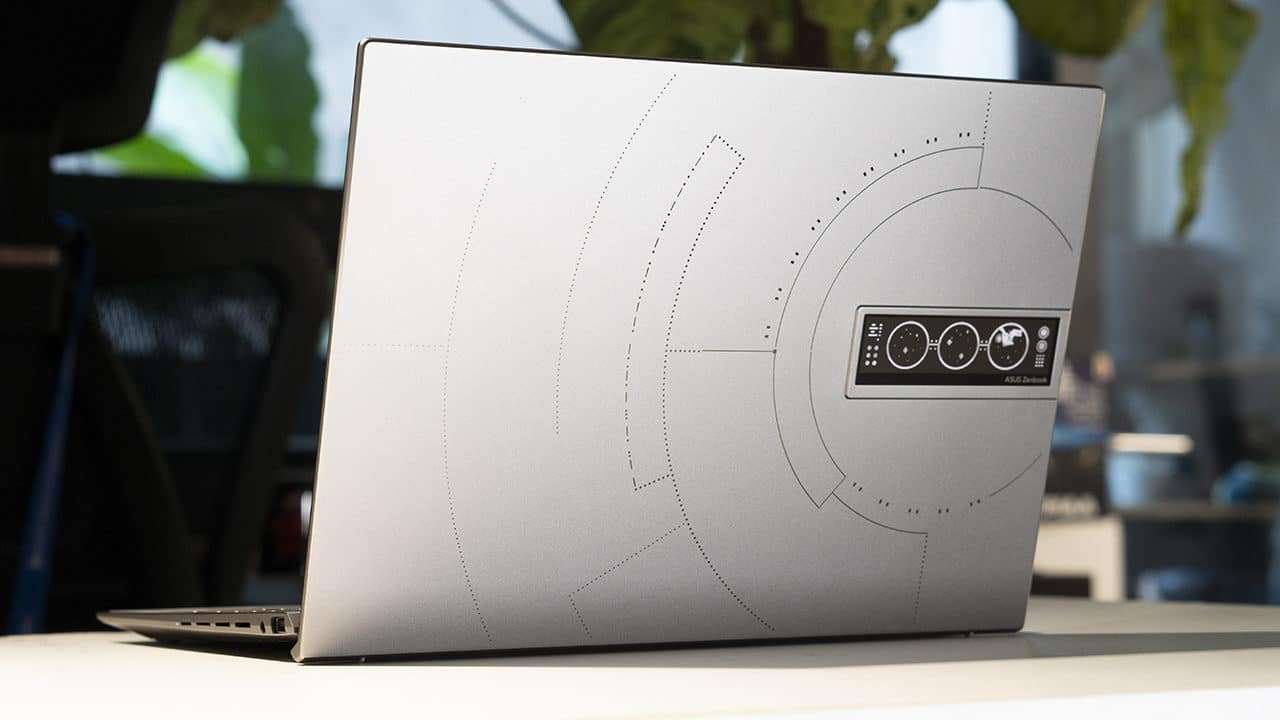
One thing you need to know about the design is that there are bits and pieces of easter eggs if you will, that give hints to how this laptop came to be.
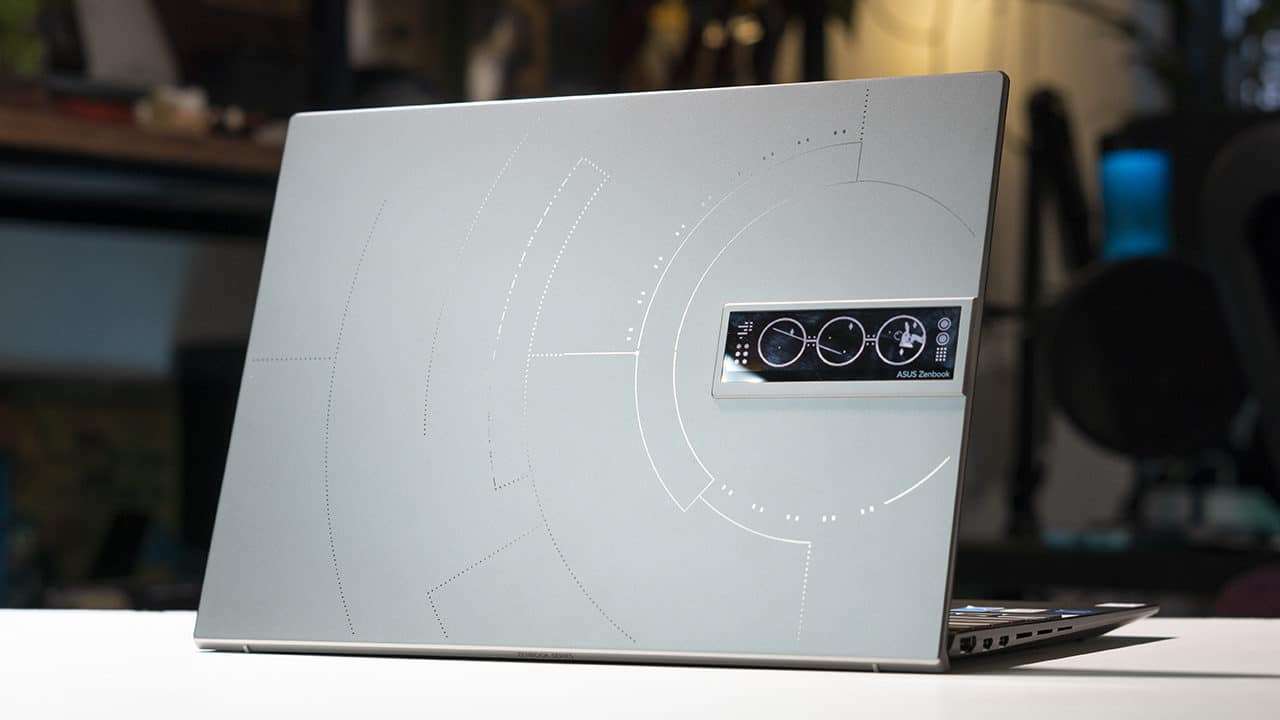
For one, most patterns on the body reflect the MIR space station where ASUS laptops spent more than 600 days back in the ‘90s.
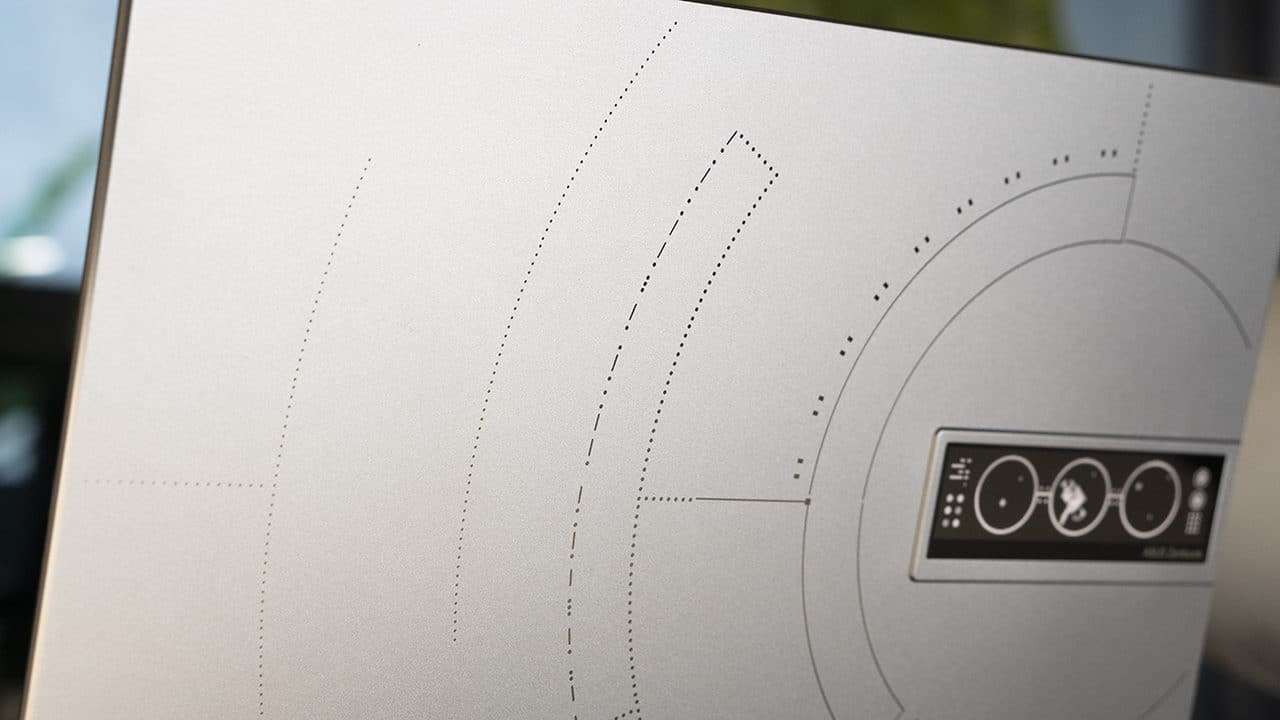
Additionally, dots and dashes seen on its lid are Morse code and translate to “Ad Astra Per Aspera” which is Latin for “Through hardships to the stars”. Really great and meaningful detail.
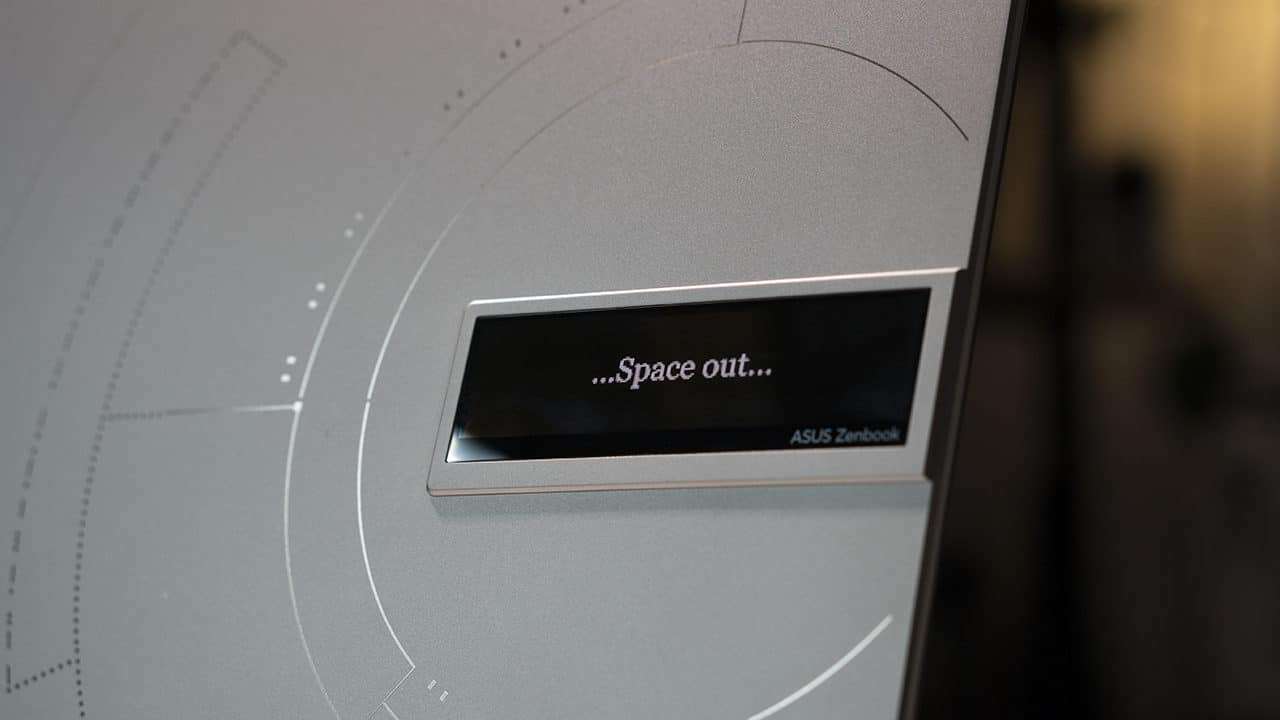
And of course, one thing that’s hard to miss is this small display on its lid. This is the exclusive ZenVision display which is a 3.5-inch OLED screen in monochrome loaded with animations and customizable graphics to add a sprinkle of personalization to the laptop.
ASUS says this potential-filled display is inspired by a datasheet of a spaceship. And by using its MyASUS app, you can change what’s shown from time, date, battery level, to your own business card, animation, or a custom message.
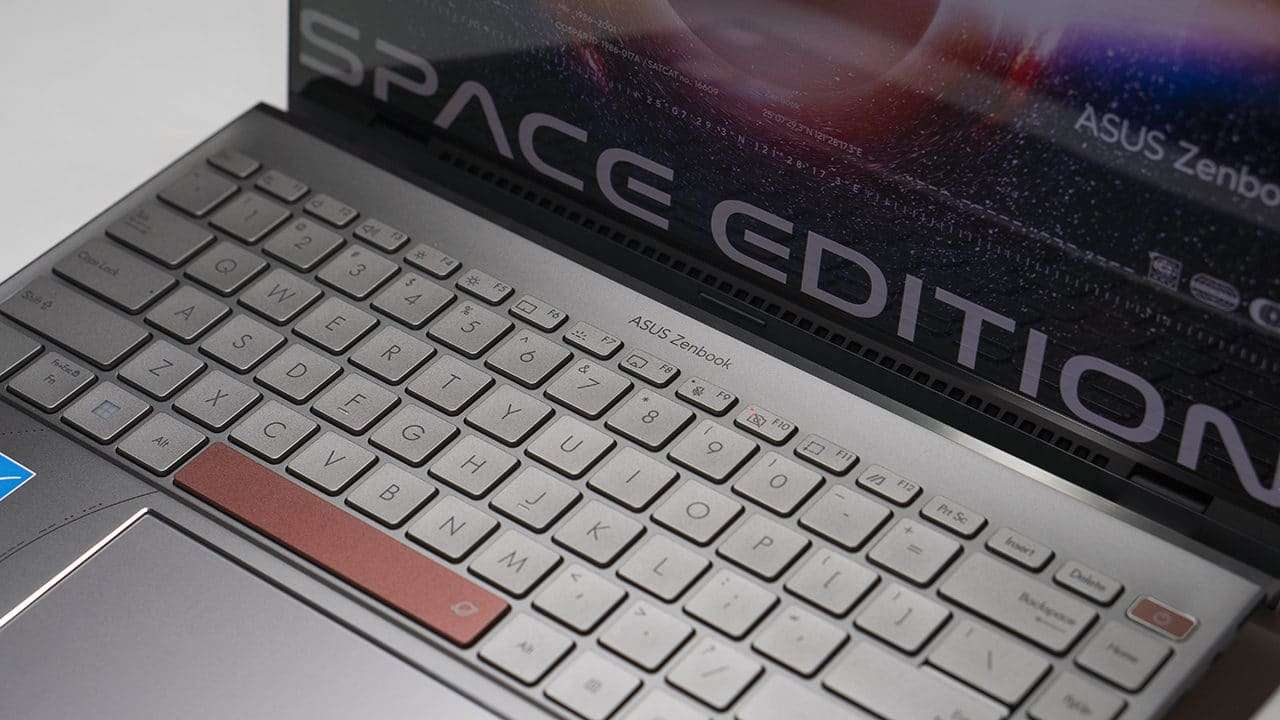
The keyboard is designed in a way that both the space bar and power button are highlighted with a differently-colored coating that blends well with the overall aesthetic of the laptop.
Again, small details like a planet printed on the space bar positively add to the space-themed experience in terms of hardware.
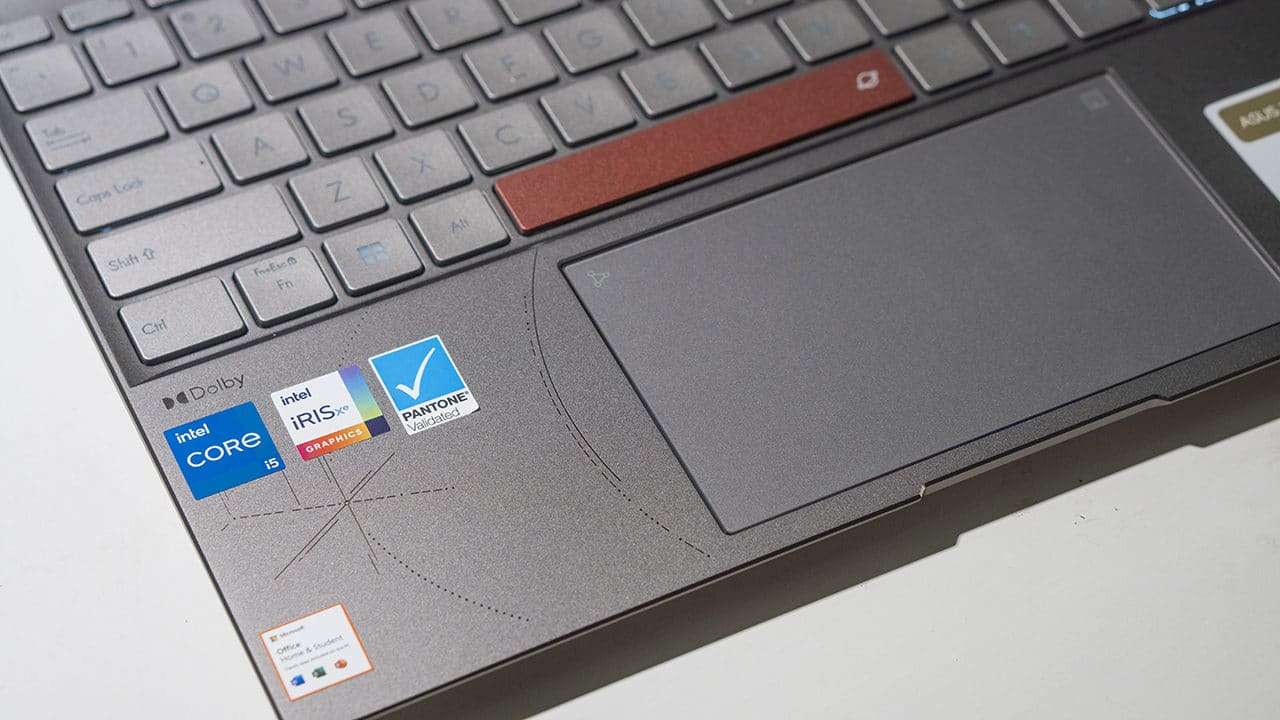
And just like a true ASUS laptop, the device feels very solid and durable which is not at all surprising.
After all, the company really reinforced this specific model to pass some space-grade tests like vibration & temperature and withstand being in a space capsule where large temperature differences are common.
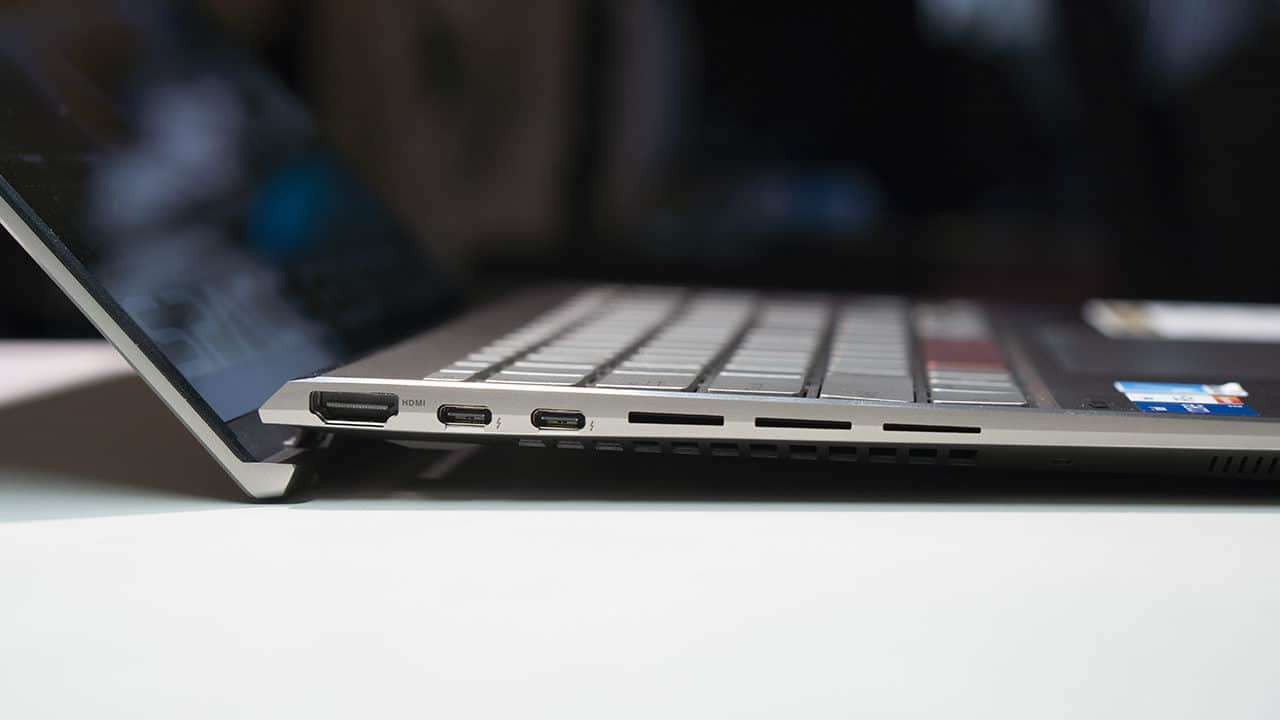
With its availability of ports, I found the presence of two Thunderbolt 4 USB-C ports really useful for charging and transferring files from my devices. Its full-size HDMI port also made it possible for me to easily hook up the laptop to an external monitor if I need the extra space for video editing.
The audio jack also came in handy for my headphones during late-night editing (or gaming) sessions. The microSD card reader on the side might be the least that I used since we mostly use miniSD for shooting.
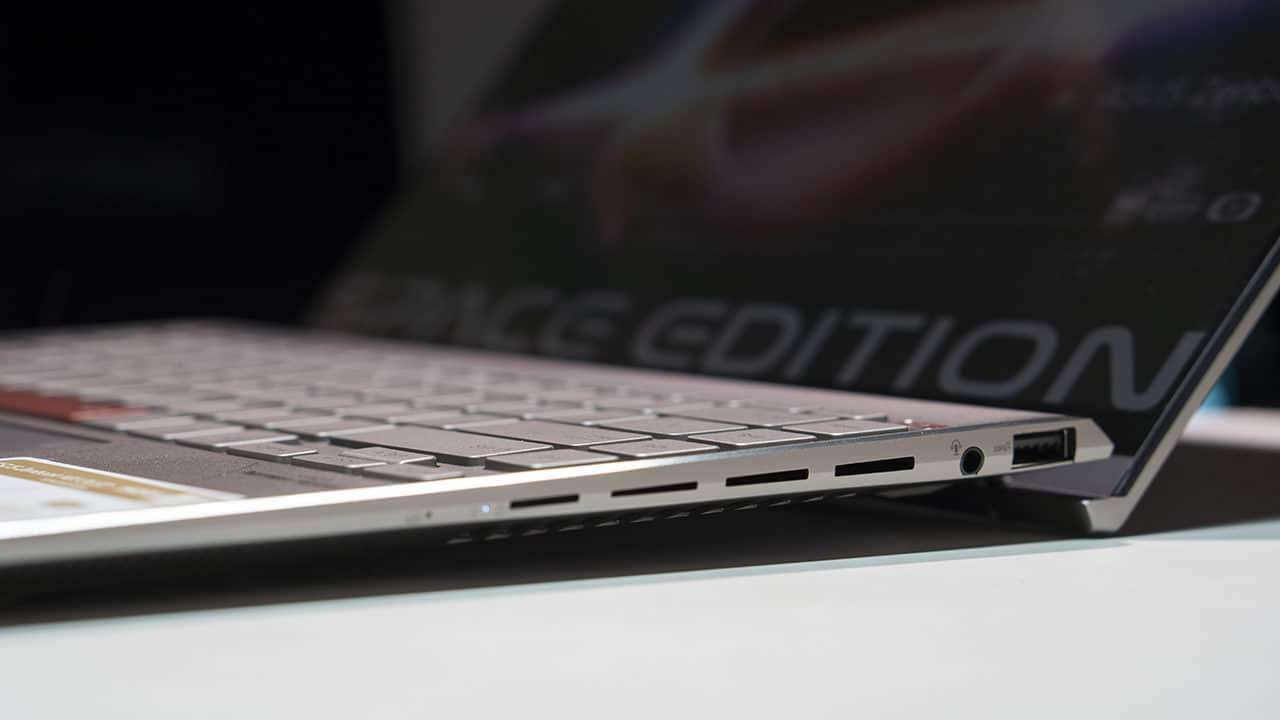
Although, it’s still useful to us whenever we use smaller devices like action cameras since they still run on microSD cards.
As a whole, the slim physique of this Space Edition ZenBook made it easy for me to just carry it around when we want to go to a nearby coffee shop and squeeze in some work.
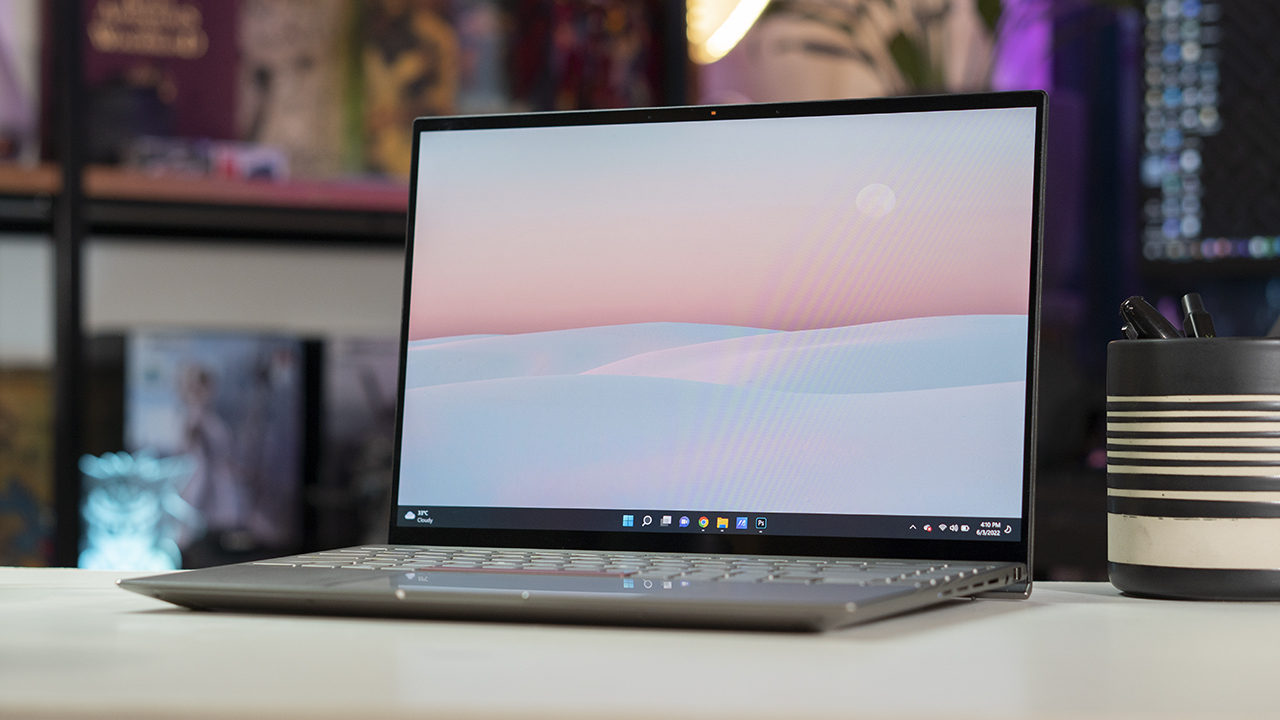
It’s not the lightest I’ve tried but it’s got a good heft to it which is something I prefer more, actually than a laptop that’s light enough to easily knock over a table or something.
Keyboard and Trackpad
Using its keyboard feels natural and the keys have decent travel in them in addition to the keys being nicely spaced out. These contributed to faster typing and I was able to hit an average of about 71 words per minute in those online typing tests.
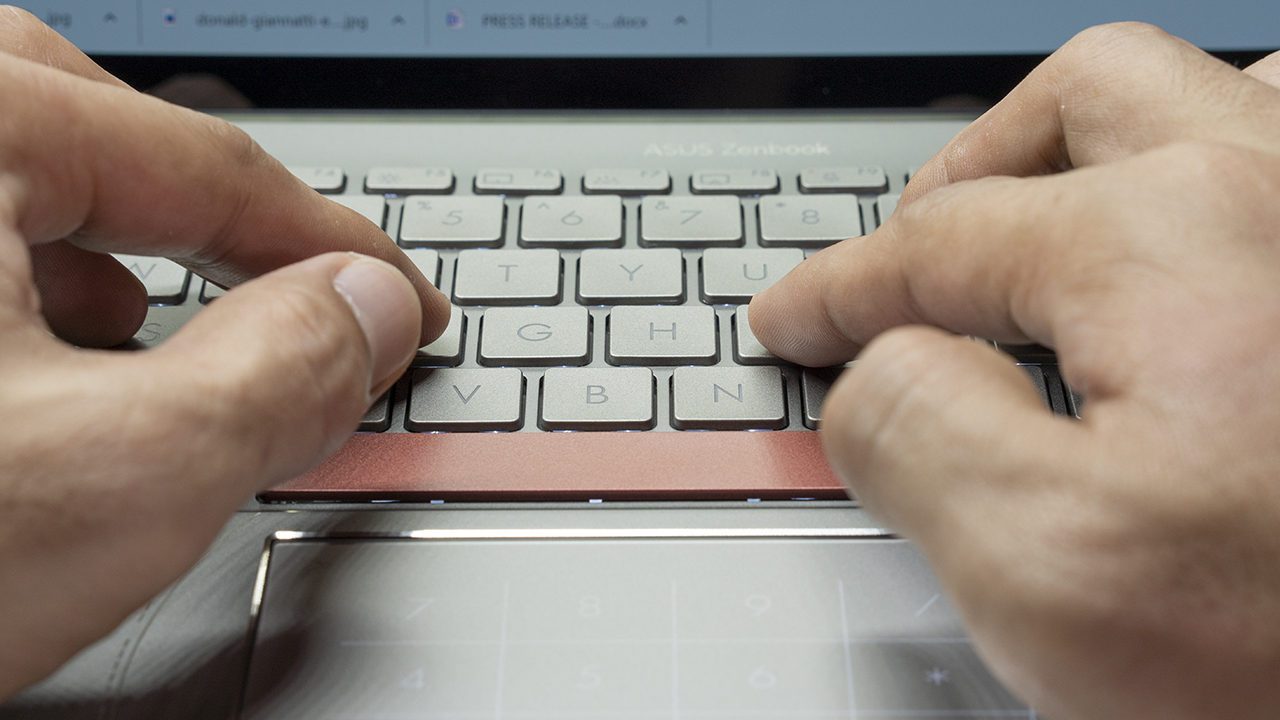
Just like a true ZenBook, the ErgoLift hinge is seen here as well that props up the chassis when you open the lid. This gives way to better air circulation and cools the laptop easier in addition to providing a more ergonomic experience when typing.
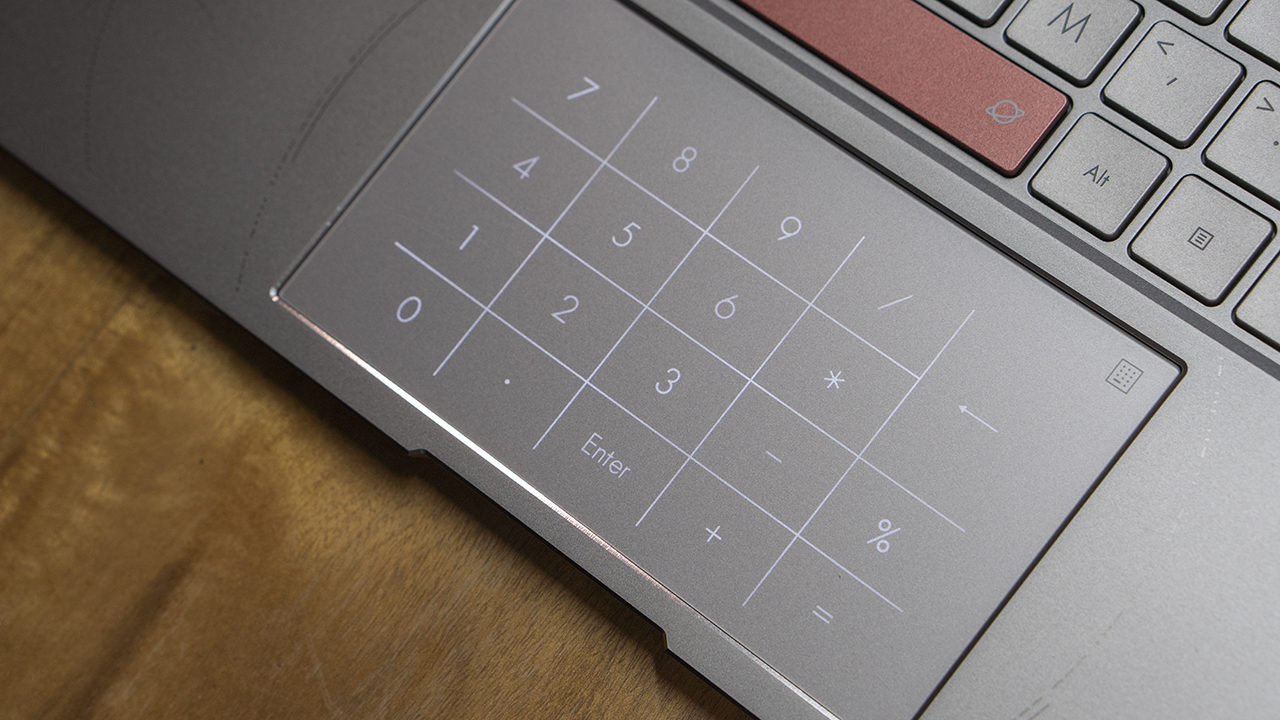
It also comes with the company’s NumberPad 2.0 which transforms the trackpad into a number pad. It supports certain gestures to instantly bring up the calculator and make numeric input easier.
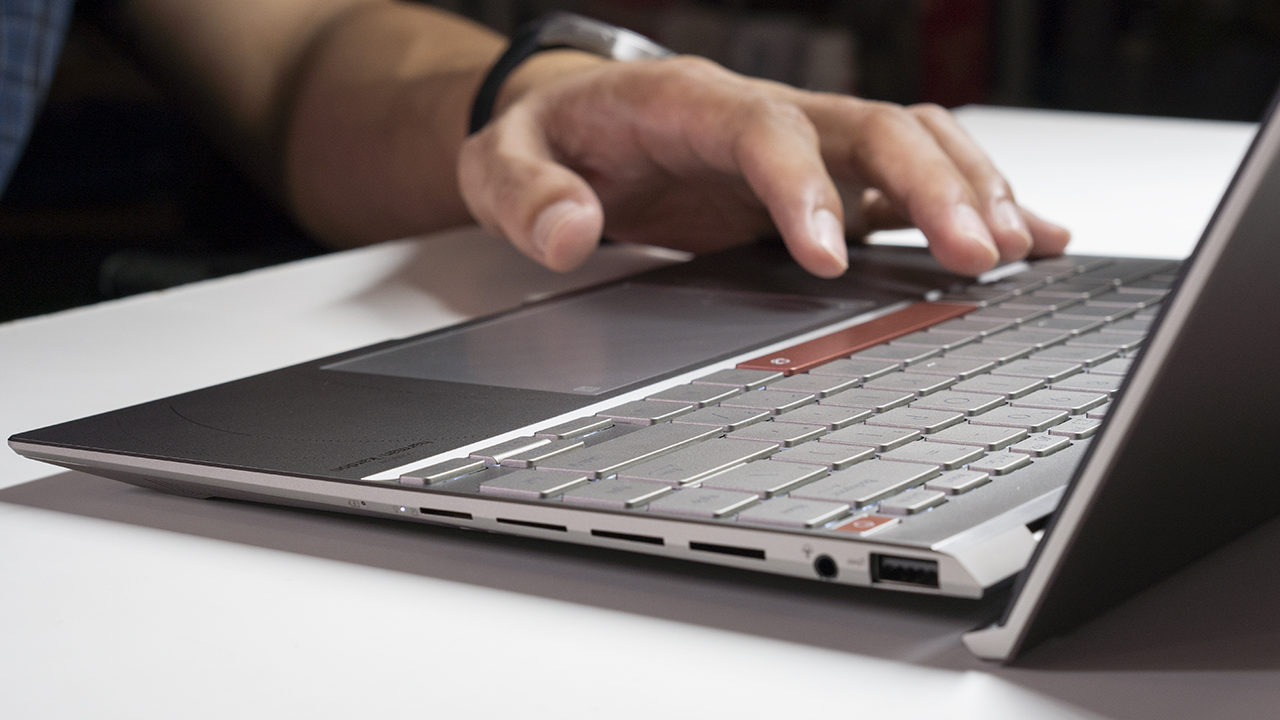
But as a trackpad in itself, it’s got ample space to move around in and has a nice, smooth feel to it. It would definitely add more awesome factor, though, if ASUS used its ScreenPad as we’ve seen on the ZenBook 14 UX435.
Display and Multimedia
For its display, it features a 14-inch OLED panel with a resolution of 2880 x 1800. This basically means that you get a 2K display packed in a 14-inch monitor that’s a lot smaller when compared to your typical 32- to 55-inch TV, therefore has a more refined quality.
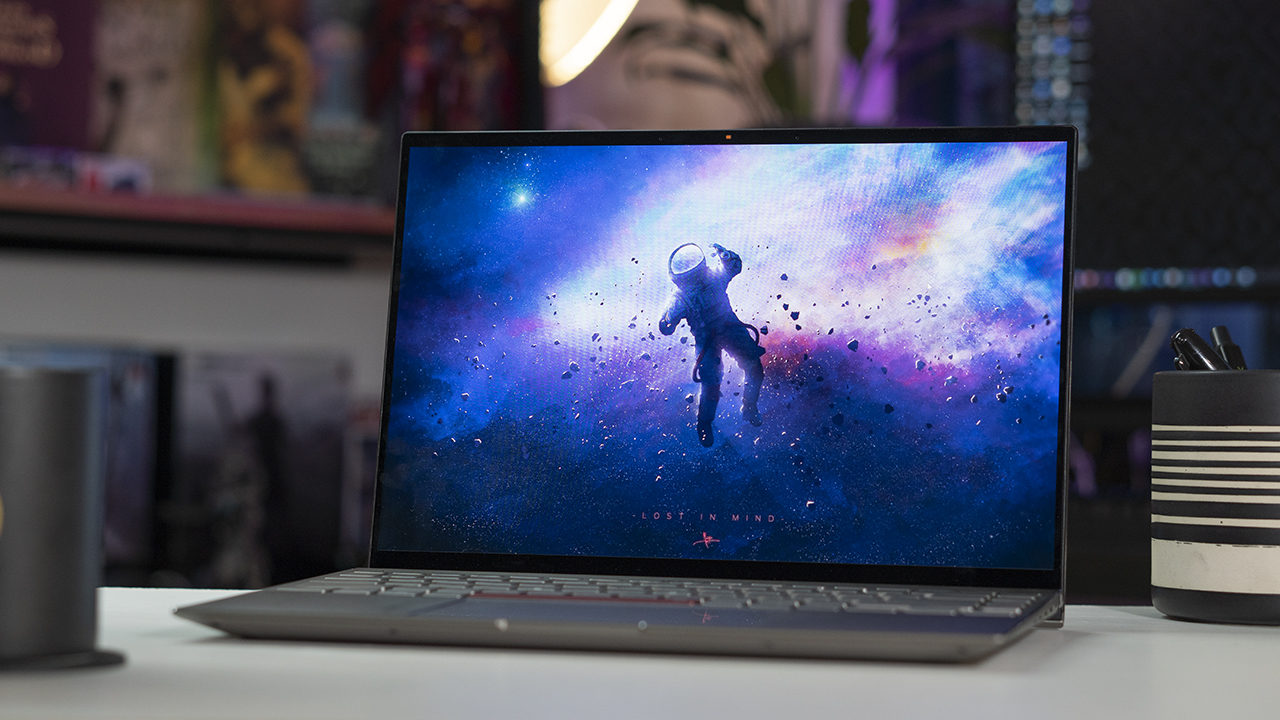
And on top of that, you get an OLED panel which translates to more vibrant colors than traditional IPS panels. So with all those working together, it’s no wonder that I was able to enjoy detailed picture quality whether I’m just browsing the internet, streaming videos, or editing our content.
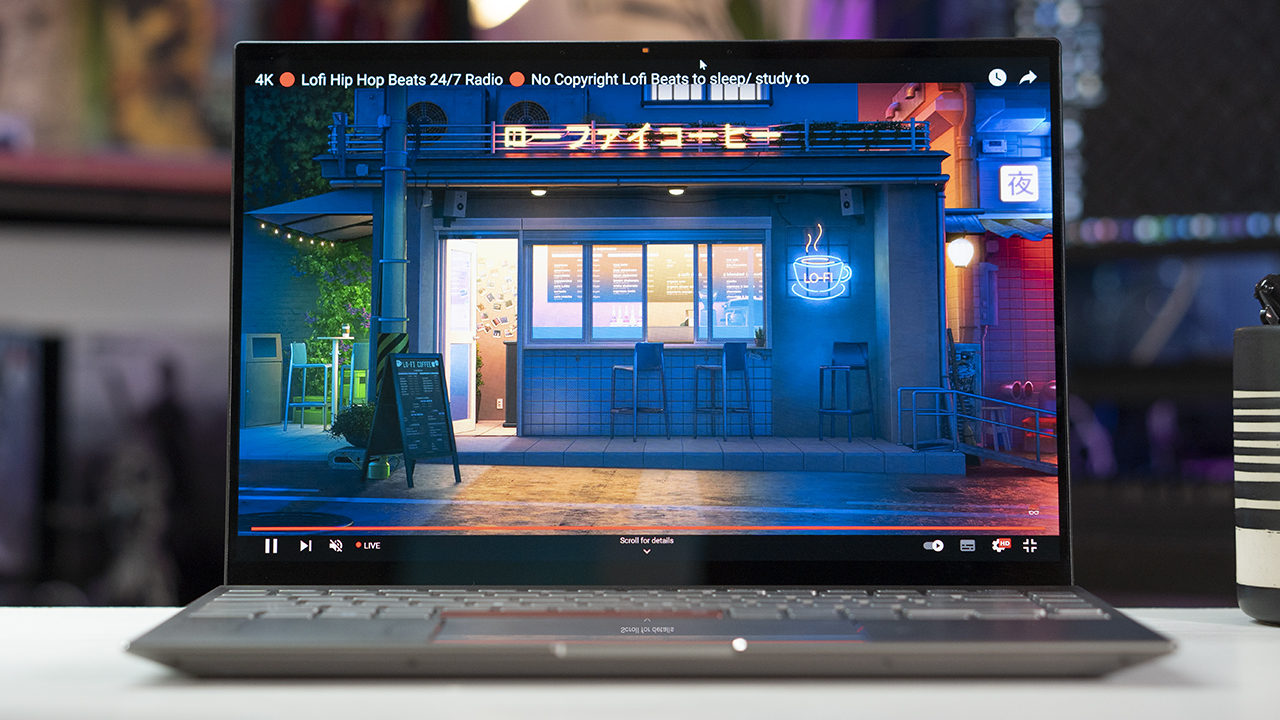
And speaking of editing, the display’s 16:10 aspect ratio really helps in this area as I could fit more elements and materials in my timeline. I could see more of my clips and even squeeze in more tools for easier access and faster workflow.
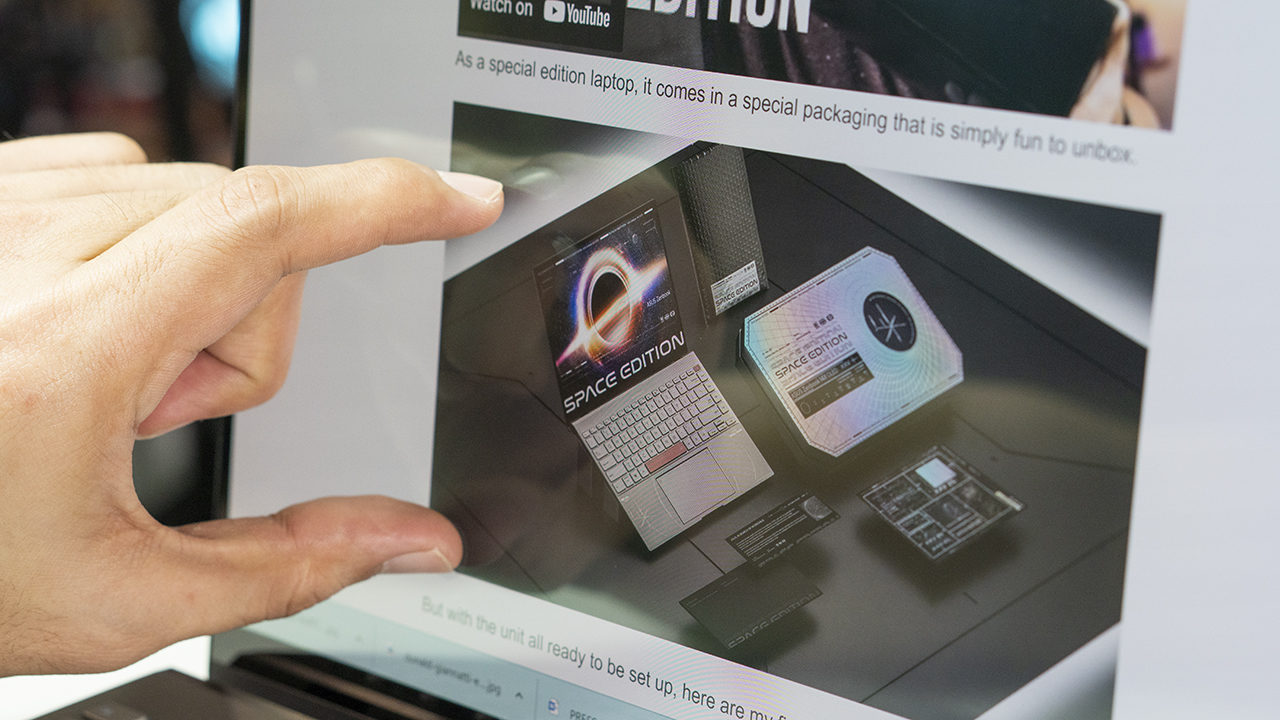
The display is also touch-enabled which conveniently adds a new input method. With this feature, usage on the laptop has been modified for the better and I’ll tell you more about it in just a bit.
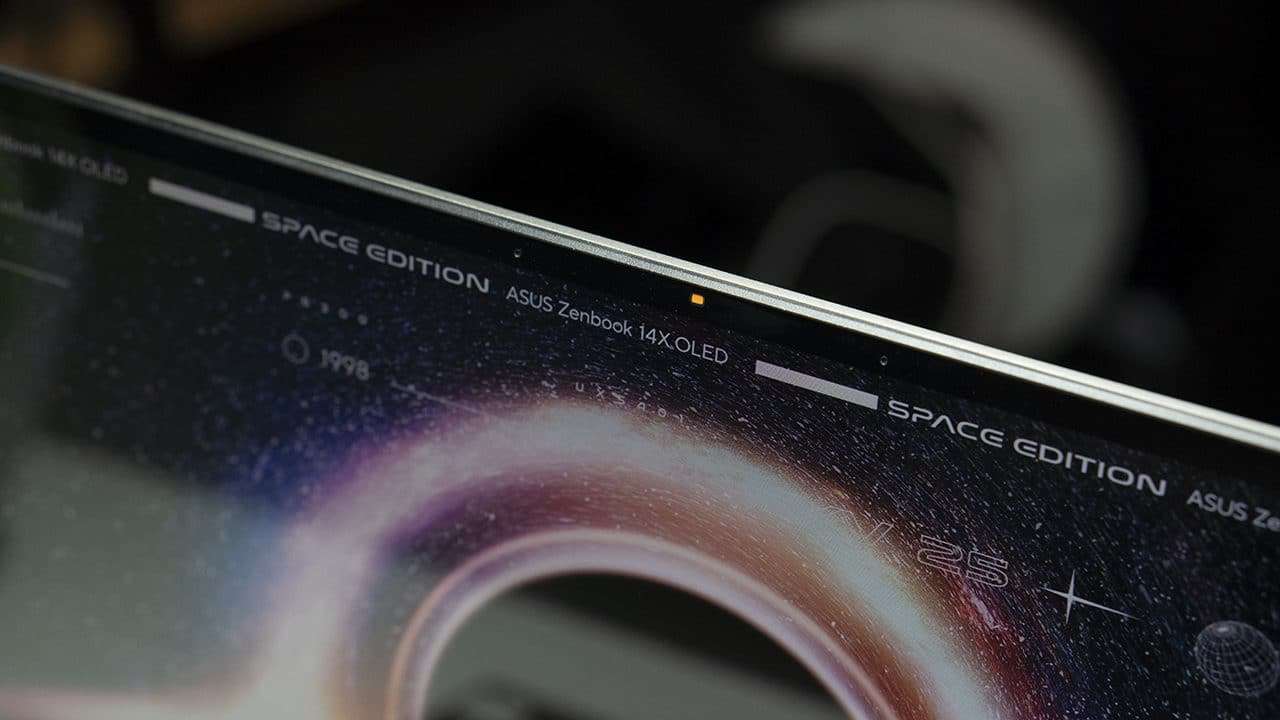
At the top of the display is a small webcam with its own physical shutter to keep prying eyes away.
The screen comes with slim side bezels which gives a pretty immersive experience especially when watching videos. Its OLED panel also ensures that you only get deep, true blacks while its HDR feature offers a wider dynamic range to see more details.
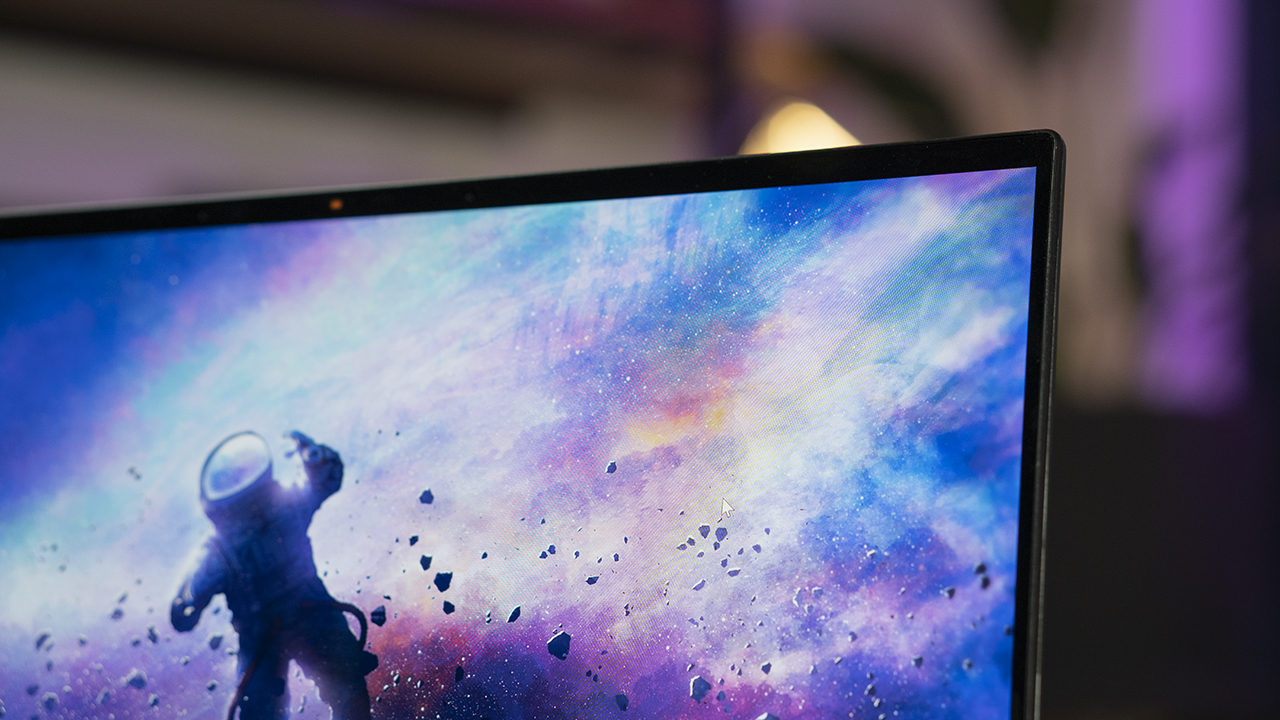
Not only do you get lively colors and sharper picture, but you’re also assured of accurate colors thanks to its display’s 100% DCI-P3 color gamut and PANTONE-validated panel. As we’ve mentioned in our other reviews, color accuracy is important to us content creators and to all those in the same industry.
This is because we color grade most of our content – whether to apply the correct white balance or make the video/photo appear different. With this, you can see why having a wide color gamut or validated panels impact color accuracy.
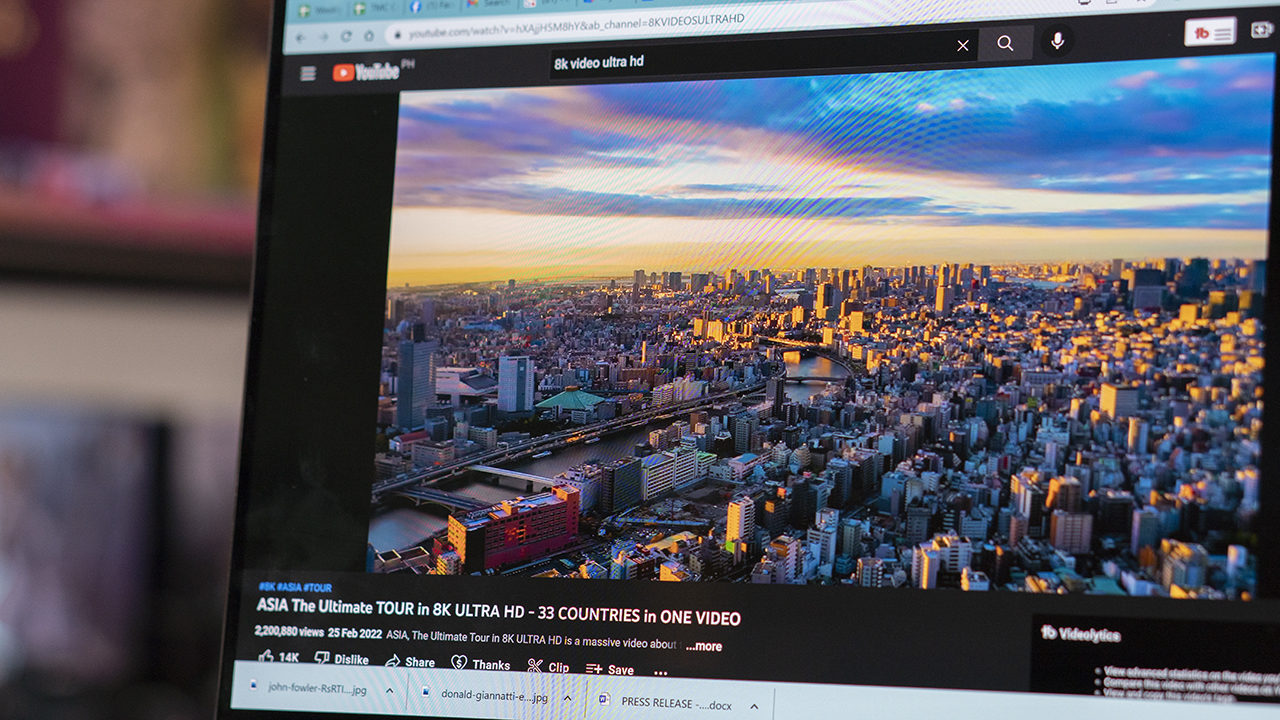
And for fans of scrolling smoothly and gliding through the laptop’s menu and UI, you’d be glad to know that the display can go up to 90Hz refresh rate — of course, it will take a toll on the battery performance.
In terms of audio, it’s got Harman Kardon-certified speakers with Dolby audio. Sound performance has been really satisfying in terms of how loud the speakers go. The laptop can easily fill a small room at full volume and the quality isn’t bad even at its loudest.
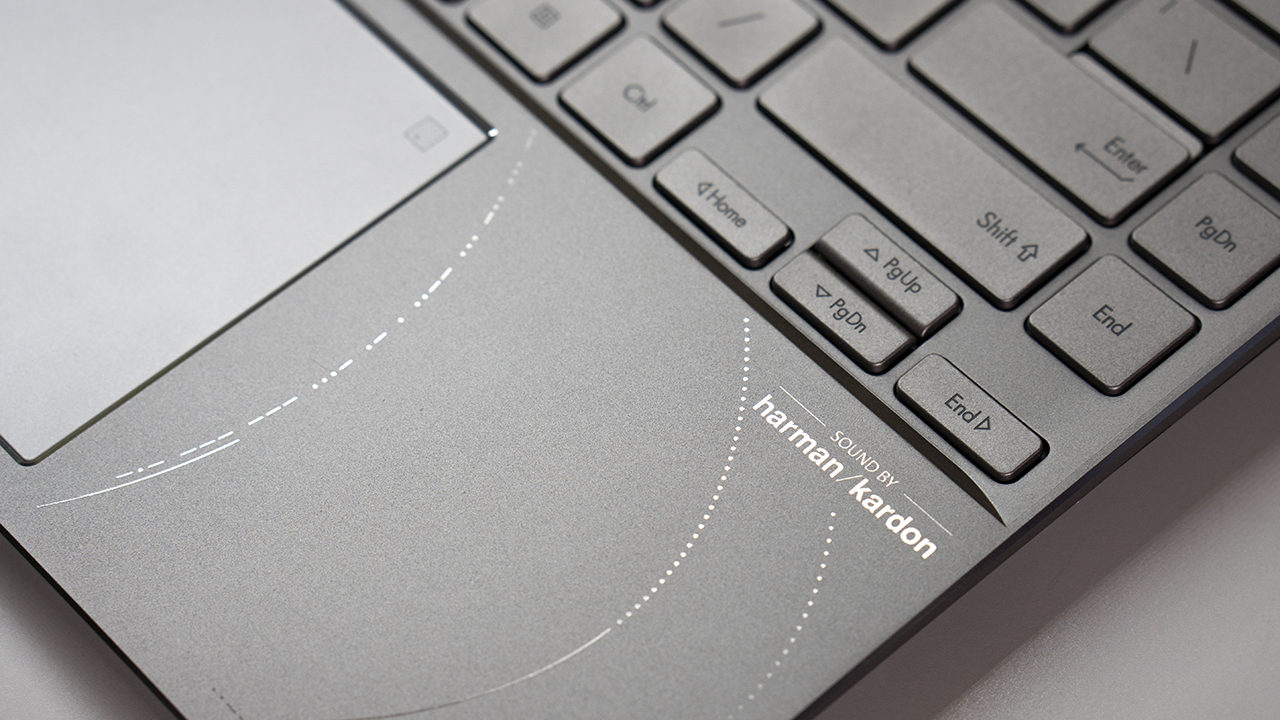
I had no problems using it as a speaker for music in our room as it’s sufficient to enjoy music while I do other things.
Additionally, for your video calls, it features an AI noise-canceling tech that aims to minimize ambient sound so your voice is picked up clearly by the people on the other line.
ZenVision
Let’s quickly go back to its lid and talk more about this new ZenVision. As mentioned, this 3.5-inch OLED screen displays black and white graphics only and comes with preset animations and functions.
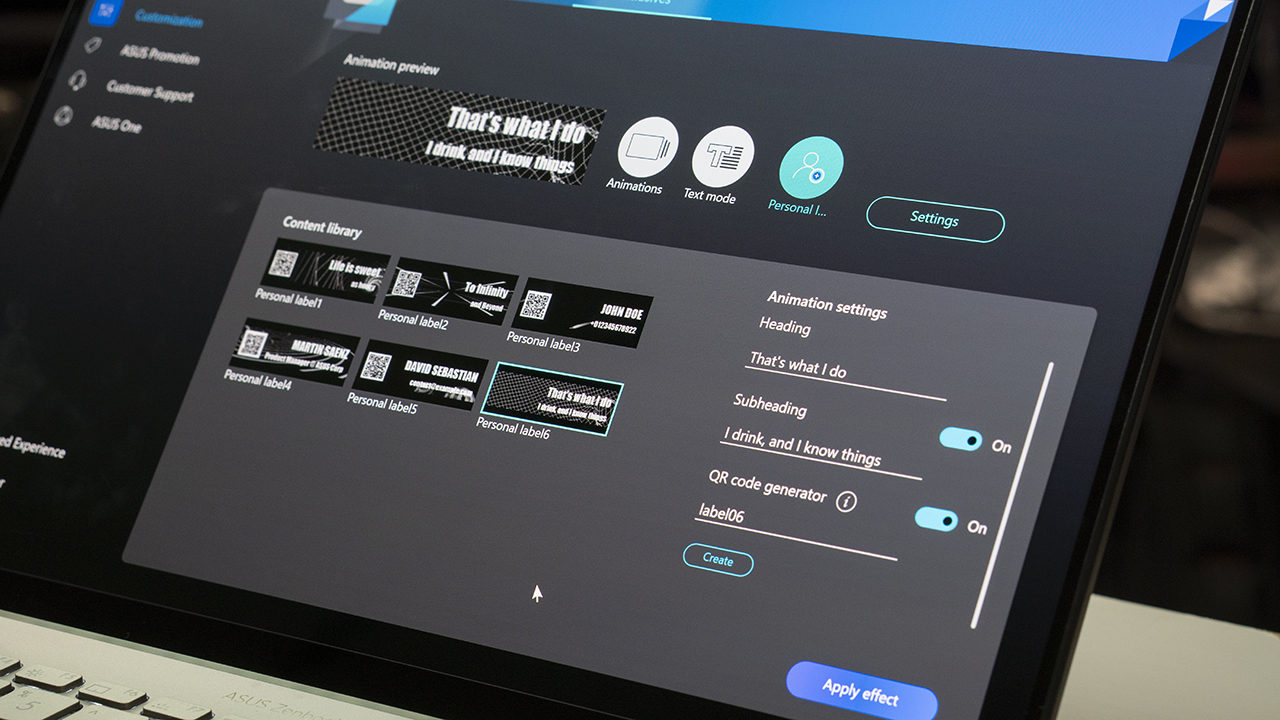
And using its MyASUS app, you can have it display the current time, a few animated space-themed graphics, or simply show text that you can personalize. You can even put a QR code on it that people can scan to lead to your website, maybe or somewhere else.
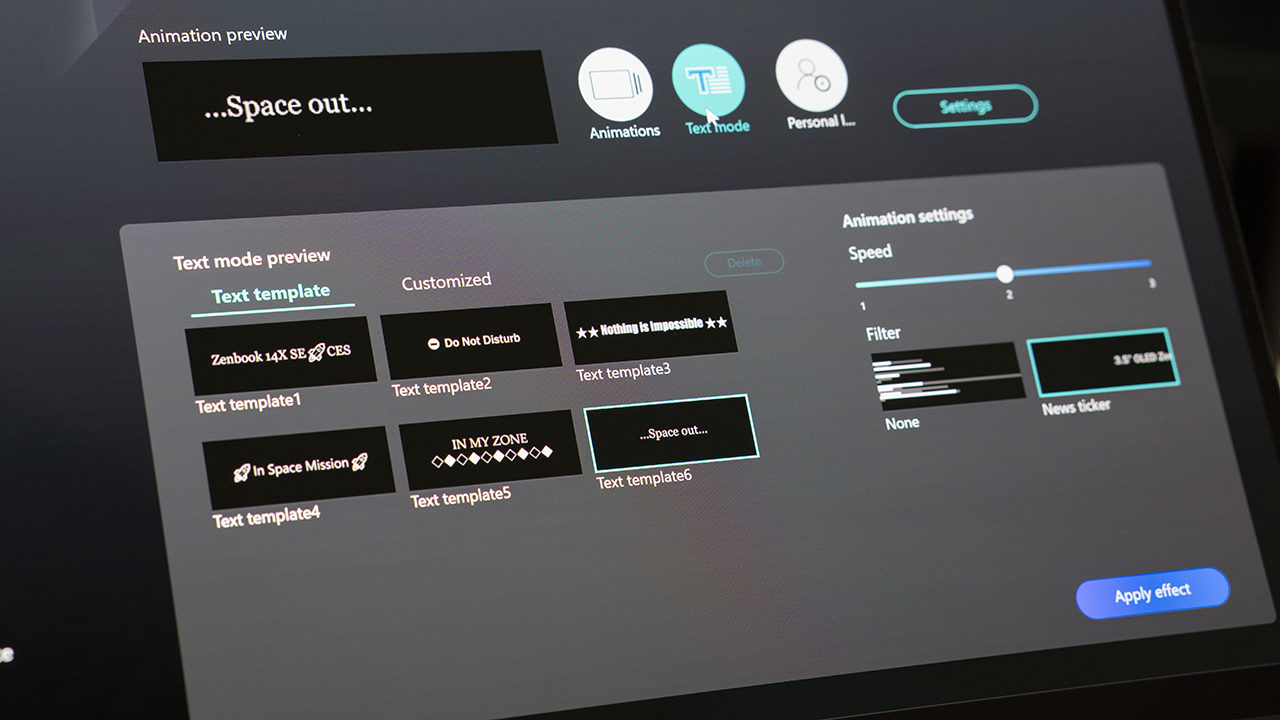
MyASUS app layout and UI are straightforward and easy to use, with most of the settings you’d want to tweak easily accessible.
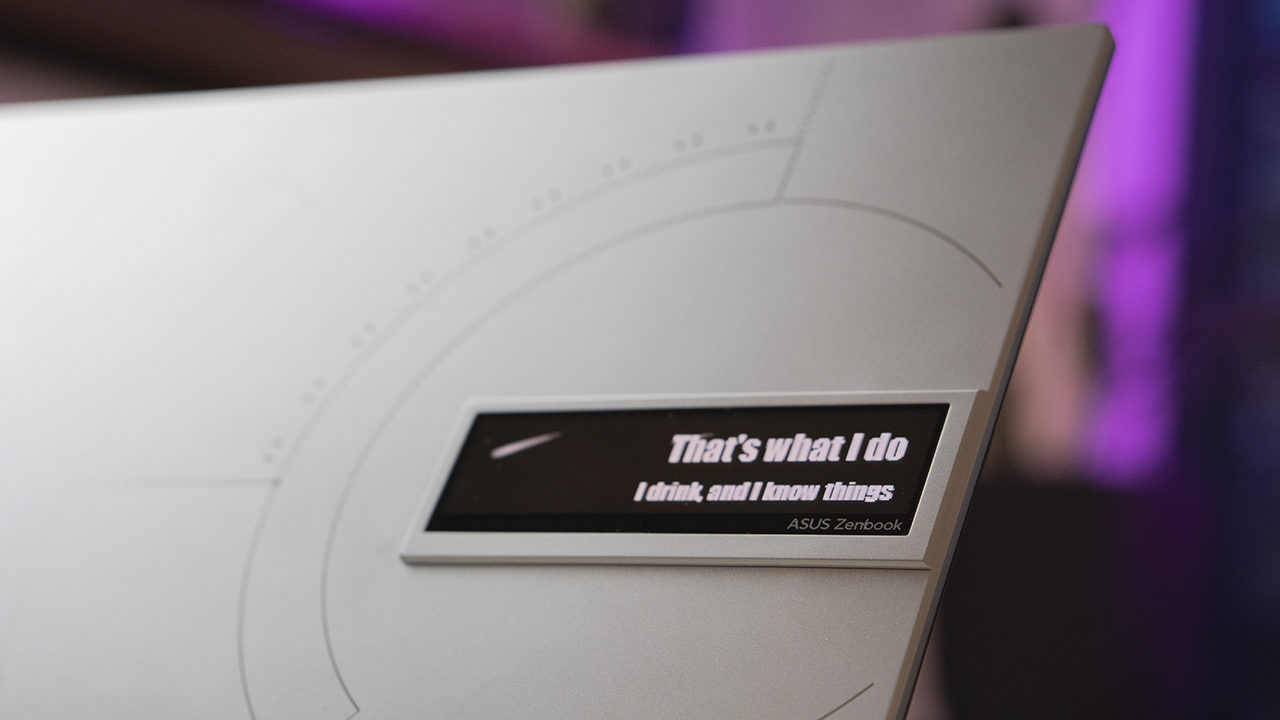
As for the ultimate use of ZenVision? Simply because it’s fun! The limit is only up to your imagination and you can use it both for fun and even for work if you direct a QR code to your business card, for example.
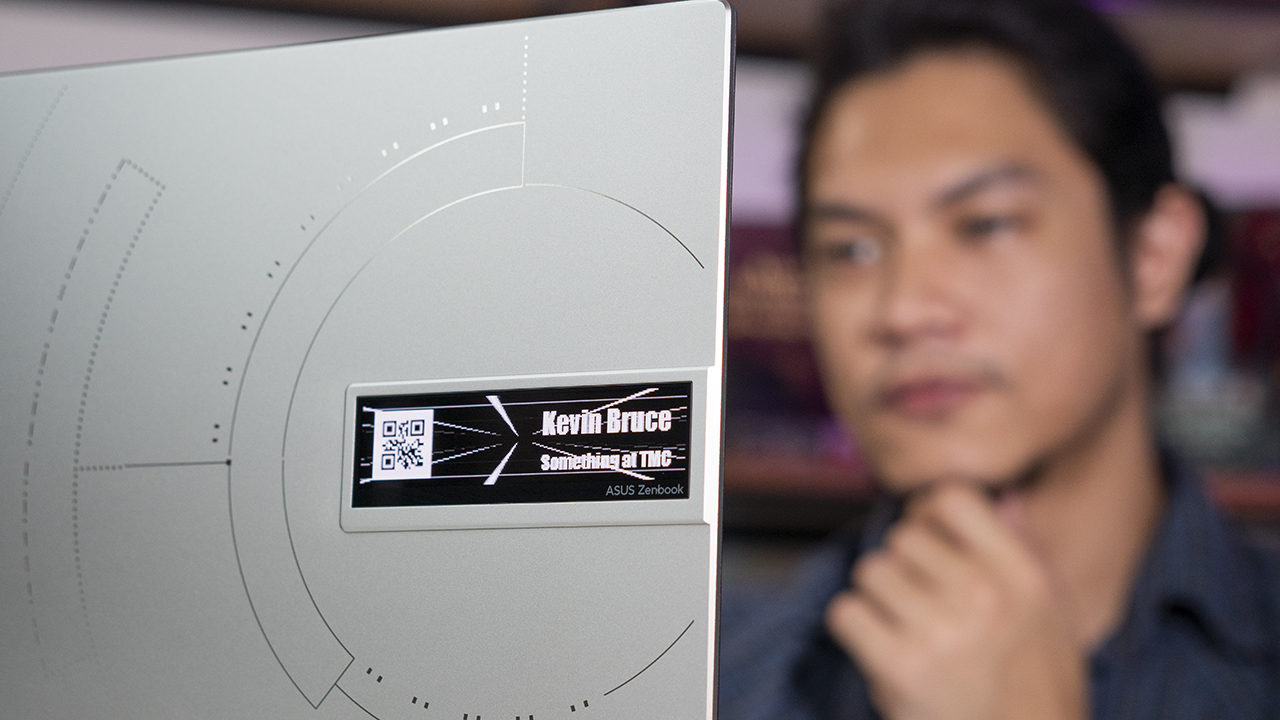
Personally, since I’ve been the one using the laptop, I don’t really see it a lot. But I’ve had people stare at it long enough when I’m out at a coffee shop.
Performance
This laptop isn’t all for show and looking pretty.
Inside, it packs powerful components that should help you accomplish tasks whether you’re at your office here on Earth or in a space station floating in outer space. But as much as I would like to test it outside of our atmosphere, I was only able to spend time with it on our planet but it did perform really well.
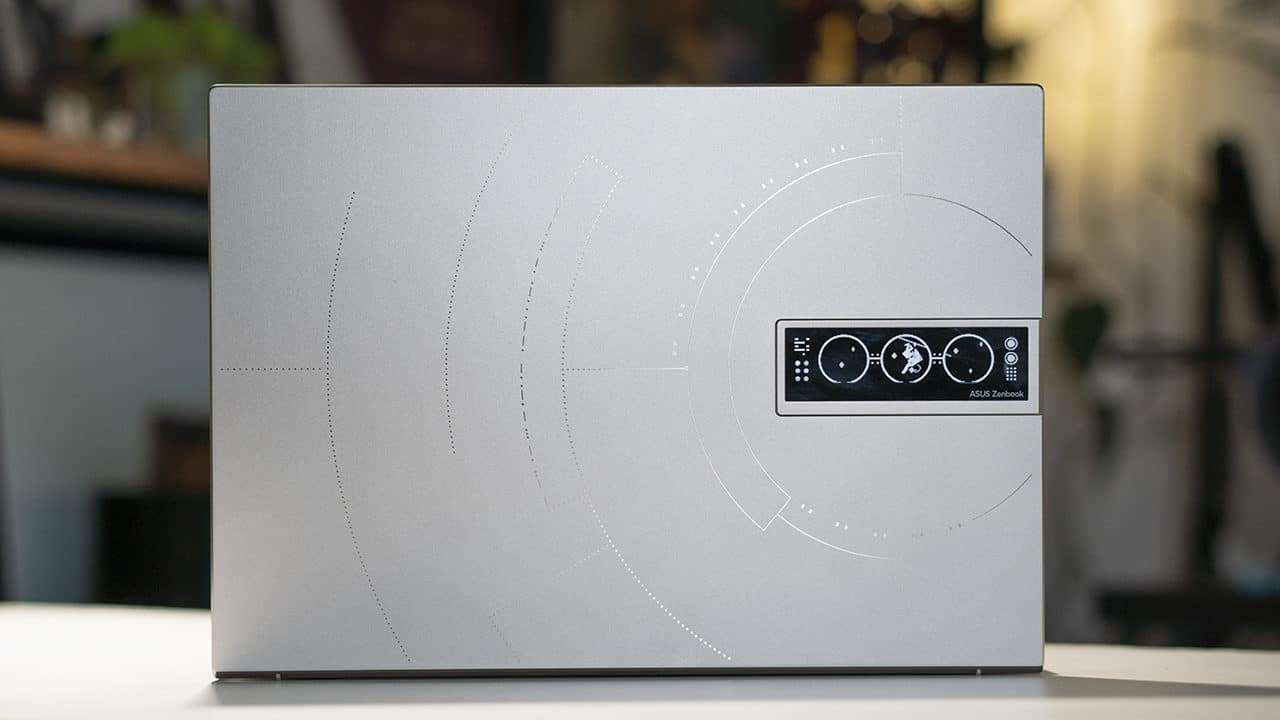
It’s got Intel’s 12th-gen processor at its core in both Core-i5 and Core-i9 configurations while graphics are handled by Intel Iris Xe. You can get up to 16GB of LPDDR5 RAM on this as well as up to 1TB SSD for faster boot-up.
The configuration we have here is the Core-i5 model with 16GB of RAM and 512GB of storage. Though it’s not the top-tier Core-i7 processor, it still proved to be really capable of being a 12th-gen Intel chip.
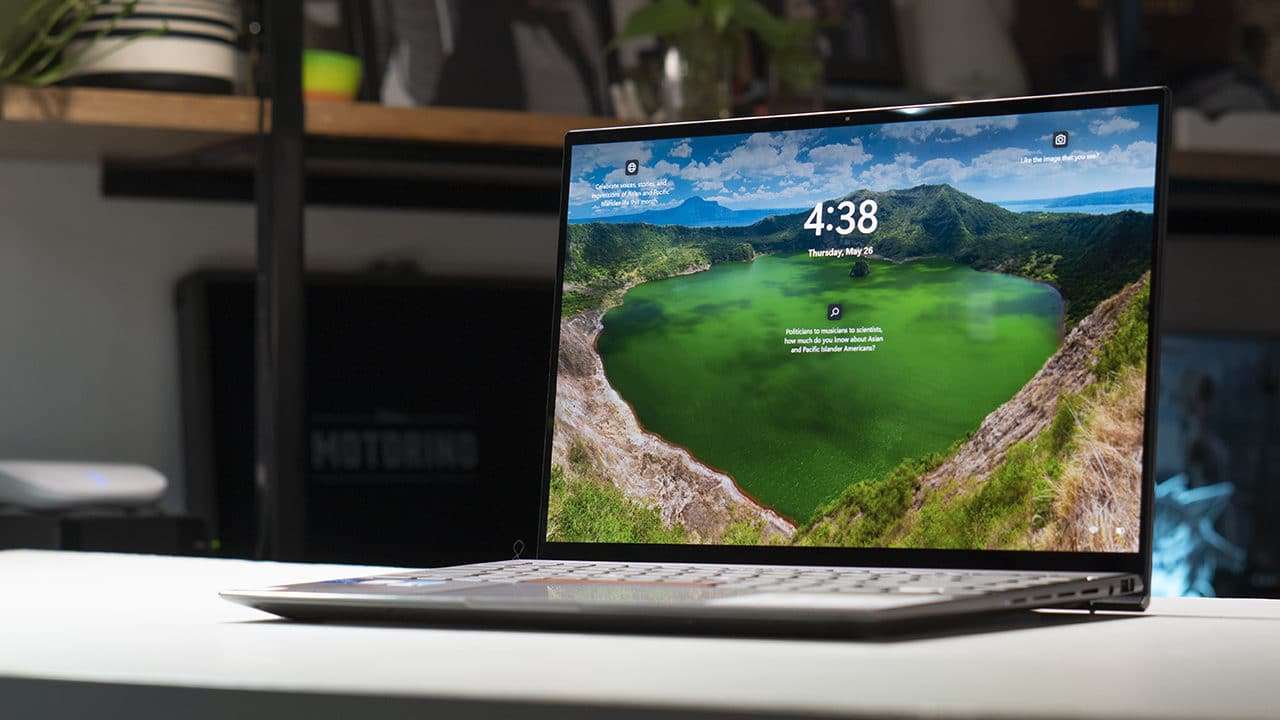
I could multitask between editing photos and videos, switching to Google Chrome to browse, and even playing games after.
I didn’t experience any performance issues during my entire time whether I’m running resource-heavy apps like Adobe Premiere or Photoshop. Even gaming on high graphics settings for Genshin Impact was not bad at all although of course, you’ll experience some frame drops. Still, not enough to obstruct my enjoyment while playing.
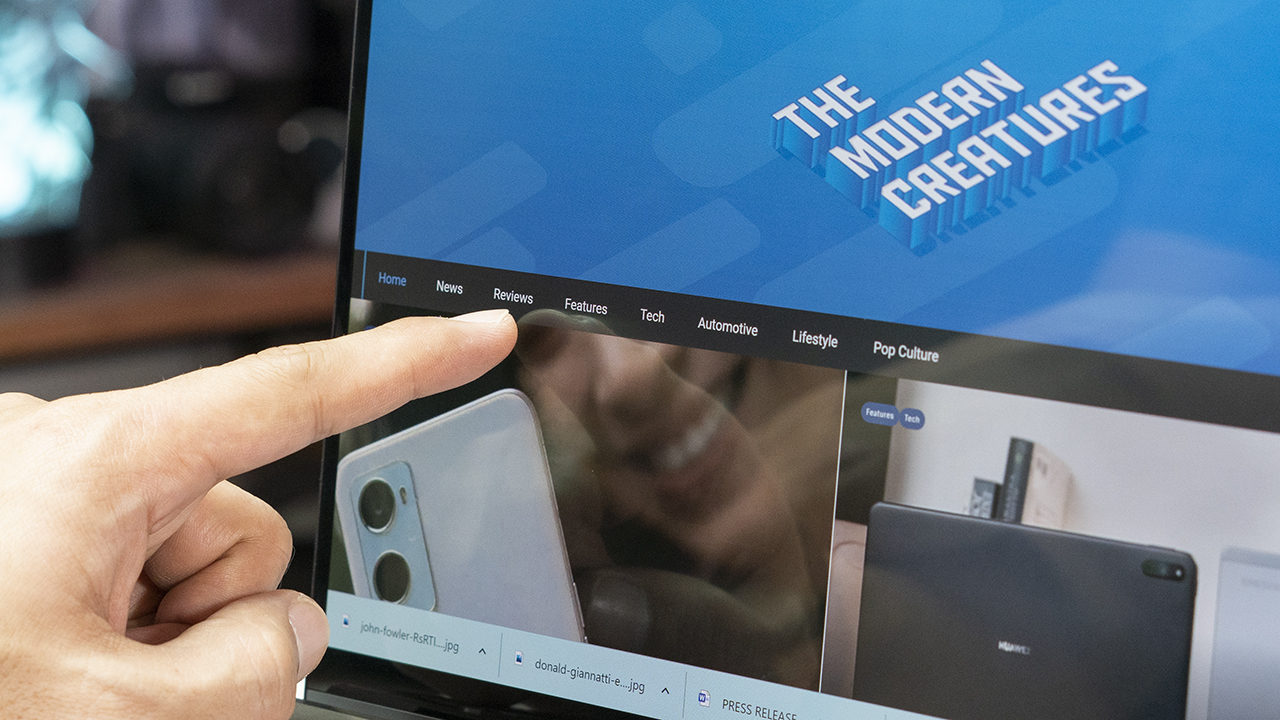
As for the use of its touch screen, workflow for me has somehow changed now that I could mix in touch input to my way of interacting with buttons and commands.
Literally selecting options on its screen has been incorporated and somehow made things a little faster. If not faster, at least feels more natural.
I could be manually selecting edit points in a paragraph and using my other hand for hotkeys or shortcut keys. Small things like that make a difference in the user’s experience.
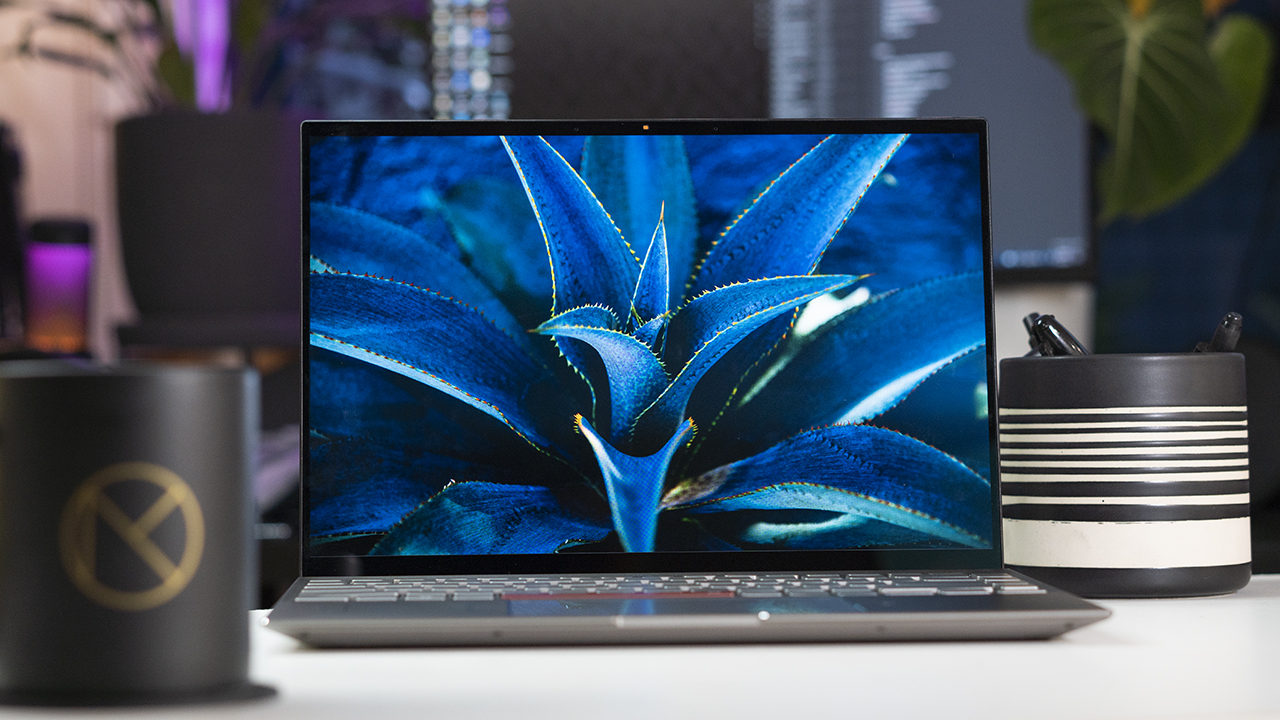
Another feature I enjoyed is its WiFi 6E connectivity for faster and more stable connections. Whenever the time comes that we need to send numerous files online or upload our videos on YouTube, we need fast and stable connectivity and its WiFi 6E helps achieve just that.
Battery
Meanwhile, for its battery, it carries a 63Wh Li-Po pack inside its sleek chassis. With my usual daily workflow of starting the day checking emails, then posting on the website, shooting devices or cars and dumping files on the laptop afterward, and finally a bit of editing, the laptop can last for about 4-5 hours depending on the length of time editing.
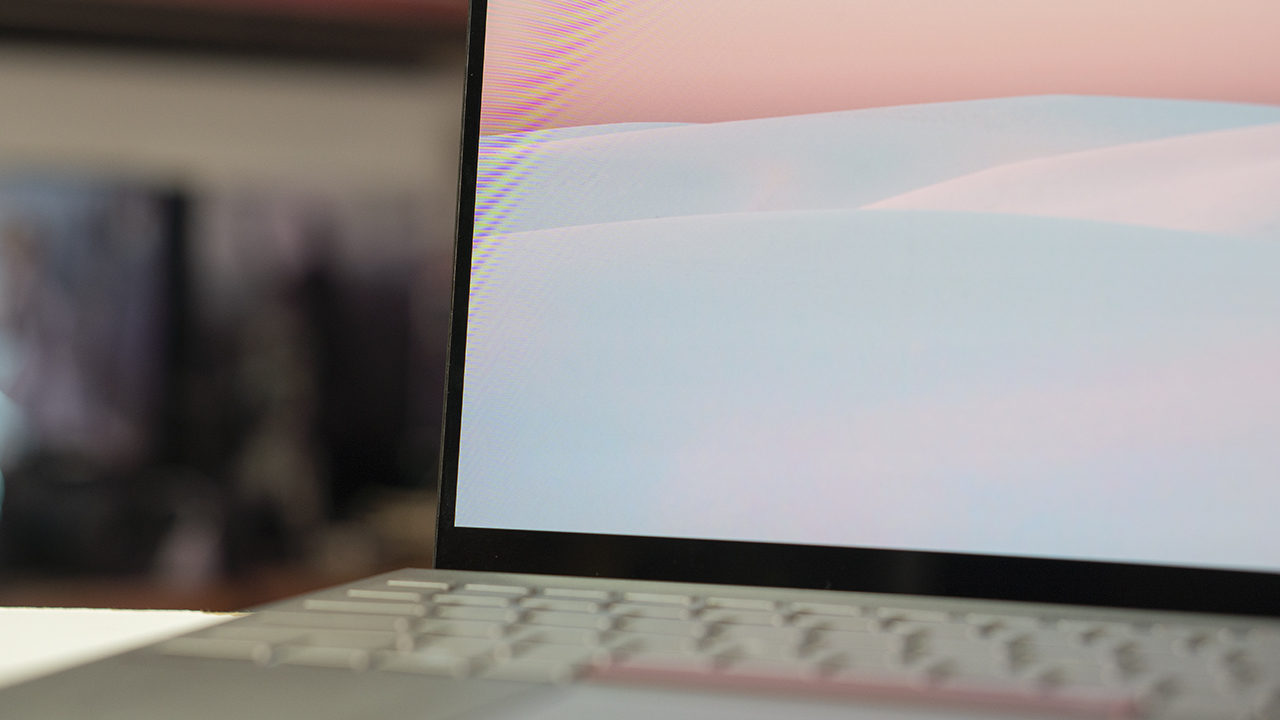
But if my workflow for the day consists more of video editing or if it’s a weekend and I could just play games, the laptop’s use will be shortened to around 3-4 hours.
Thankfully, it comes with a 100W charger which is a step up from the previous ZenBook’s 65W power brick. With it, charging the laptop comes in about an hour and a half to two hours while the laptop is in use.
Creature Feature
As always, in our reviews, The Modern Creatures aims to find special features in devices that make them worth having – their Creature Feature. For the ASUS ZenBook 14X OLED Space Edition, it would have to be its ZenVision on top of its space-themed design, of course.
Price and Final thoughts
The ASUS ZenBook 14X OLED Space Edition in this Intel Core-i5 configuration with 16GB RAM and 512GB SSD is priced at PhP 84,995. Meanwhile, the Core-i7 variant with 12GB RAM and 1TB SSD is at PhP 99,995.
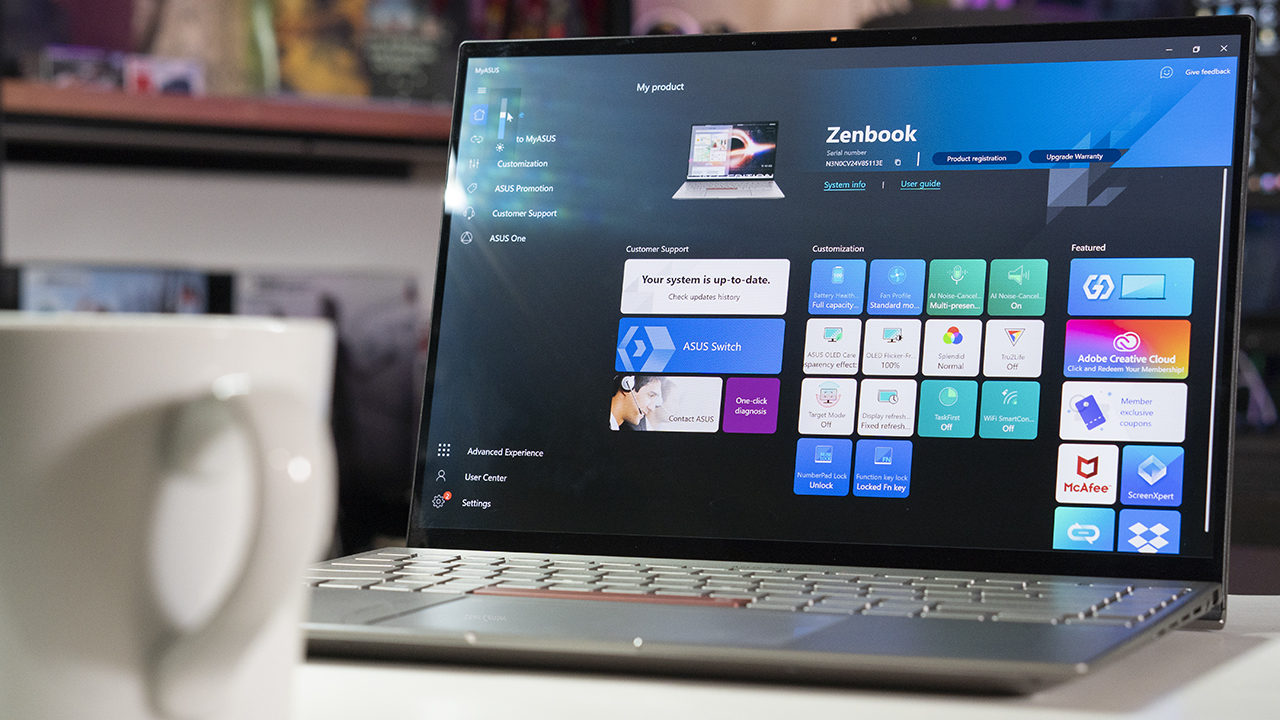
Both come with Windows 11 OS out of the box as well as a subscription to Adobe Creative Cloud.
Being a special edition device, the trinkets and design elements found here simply makes it a fun laptop to have.

From the Morse Code patterns, the box that comes with a lineup of easter eggs and cool discoveries, down to its bells and whistles like the ZenVision, these all contribute to making this specific ZenBook 14 work in all aspects.
And don’t forget about its reliable performance, immersive and color-accurate display, and powerful speakers that easily make it a content creator or gamer’s everyday laptop.



